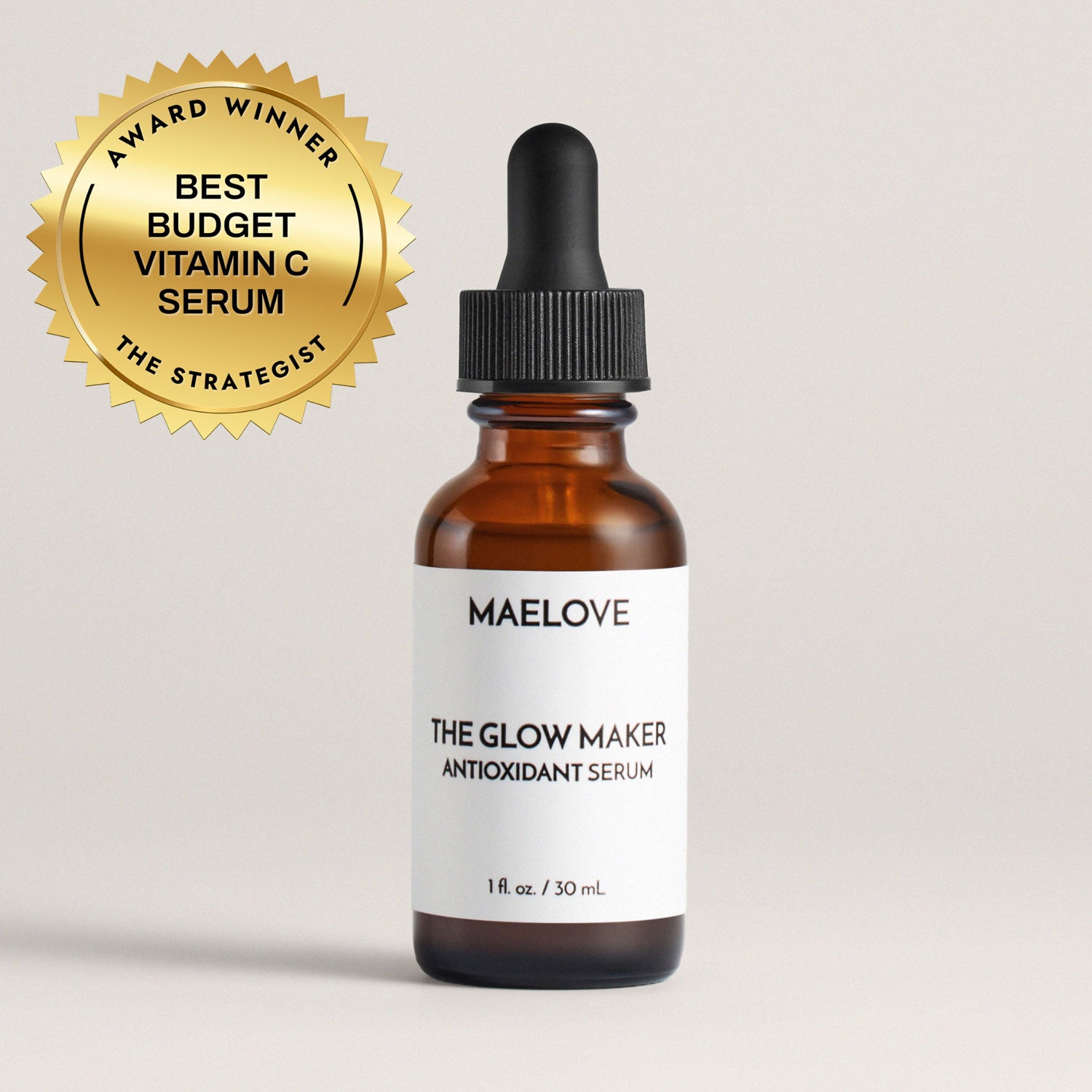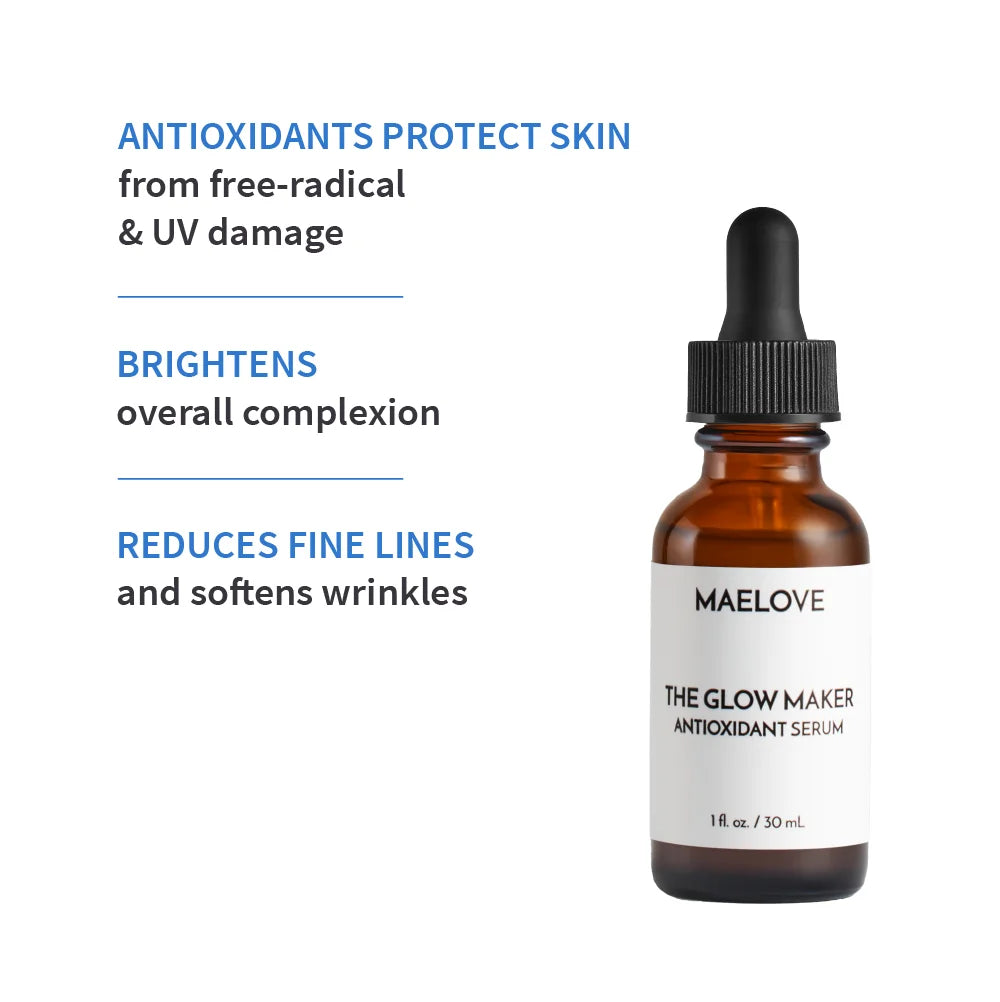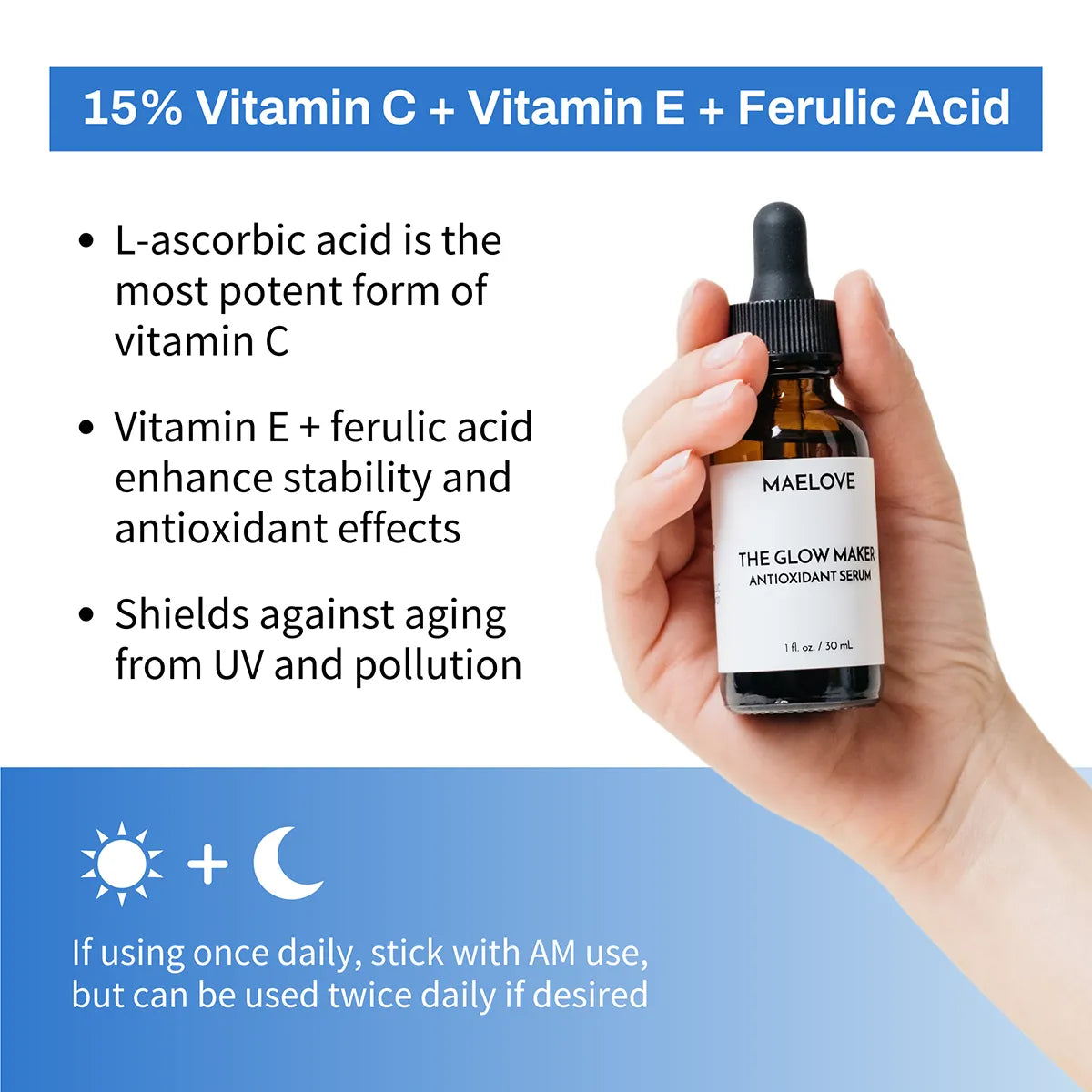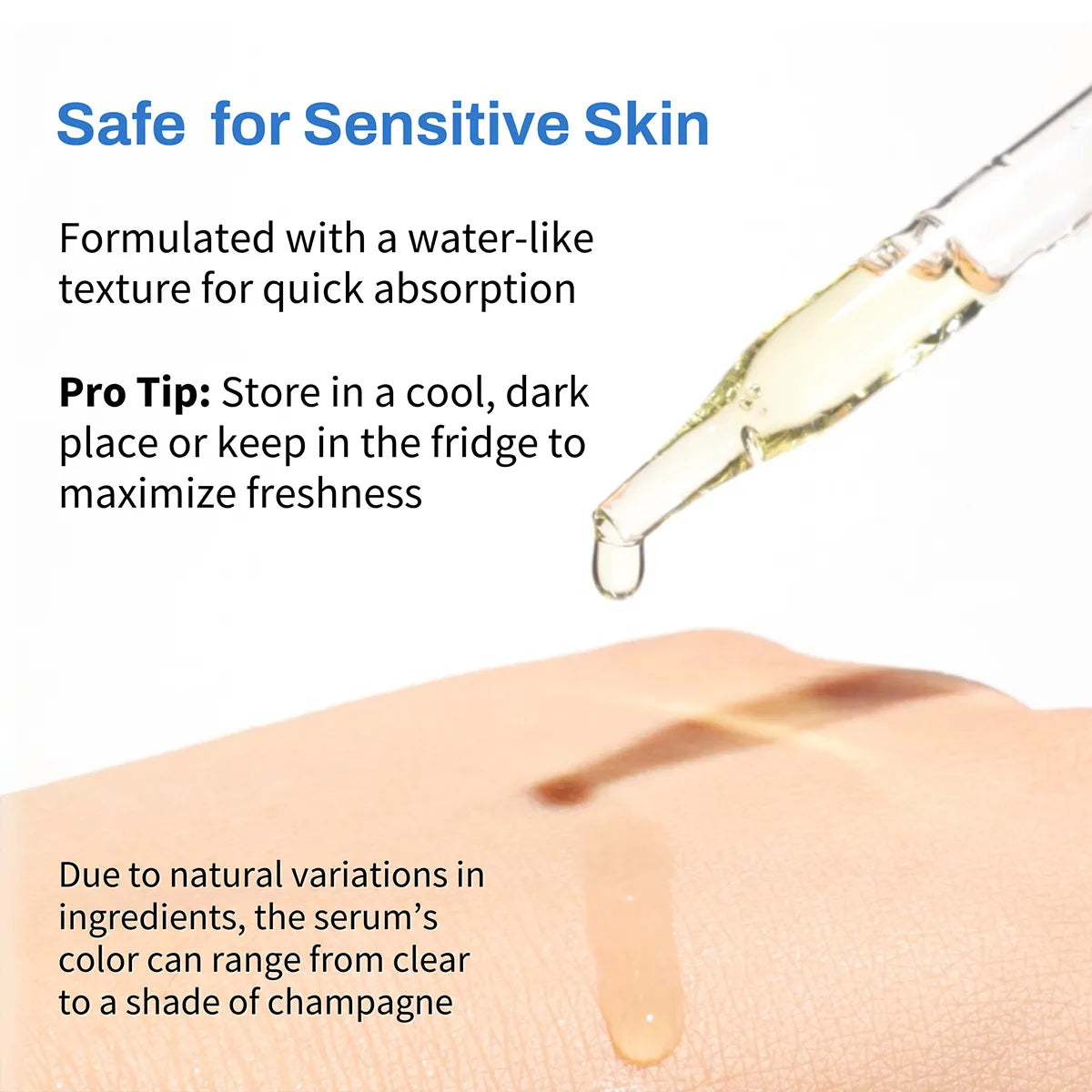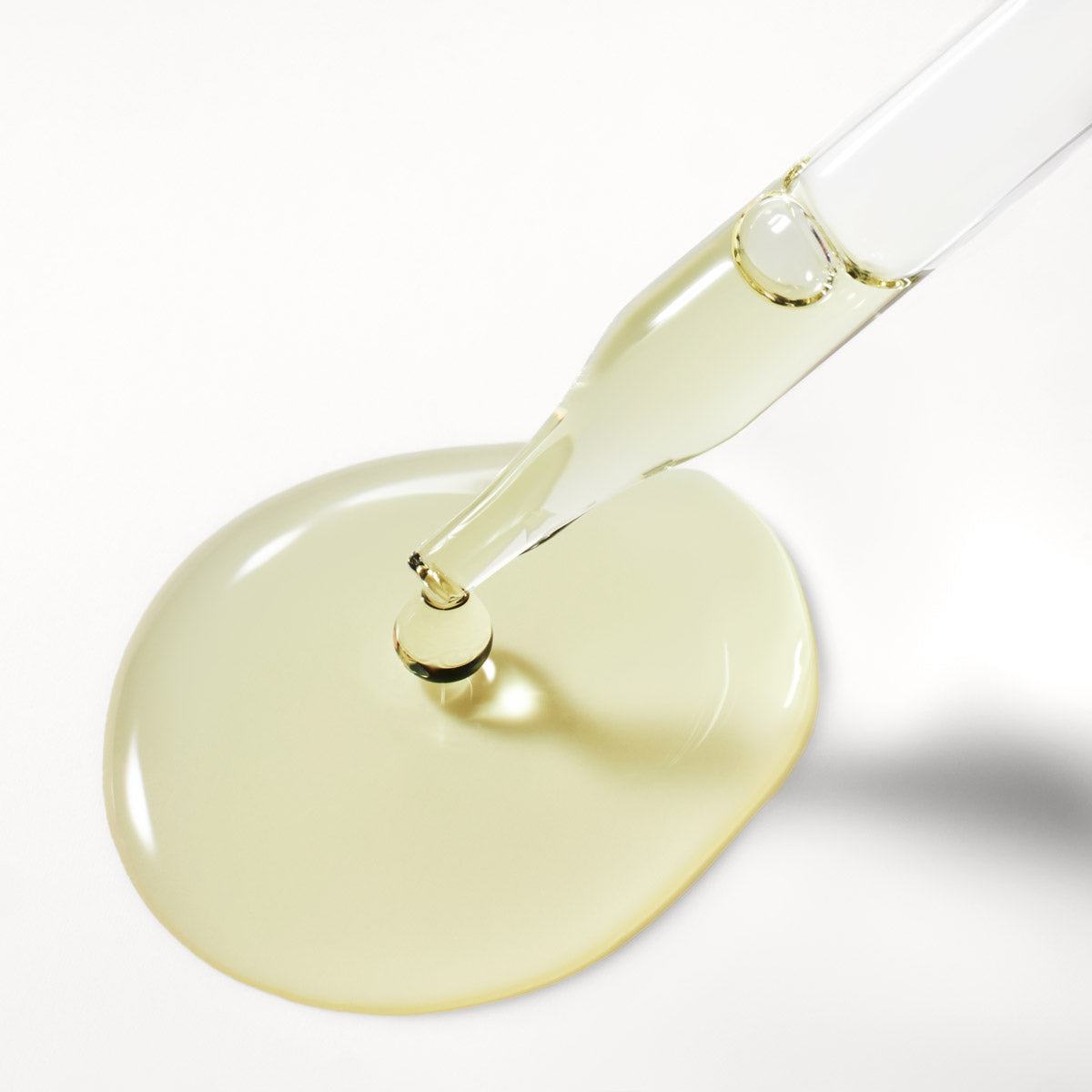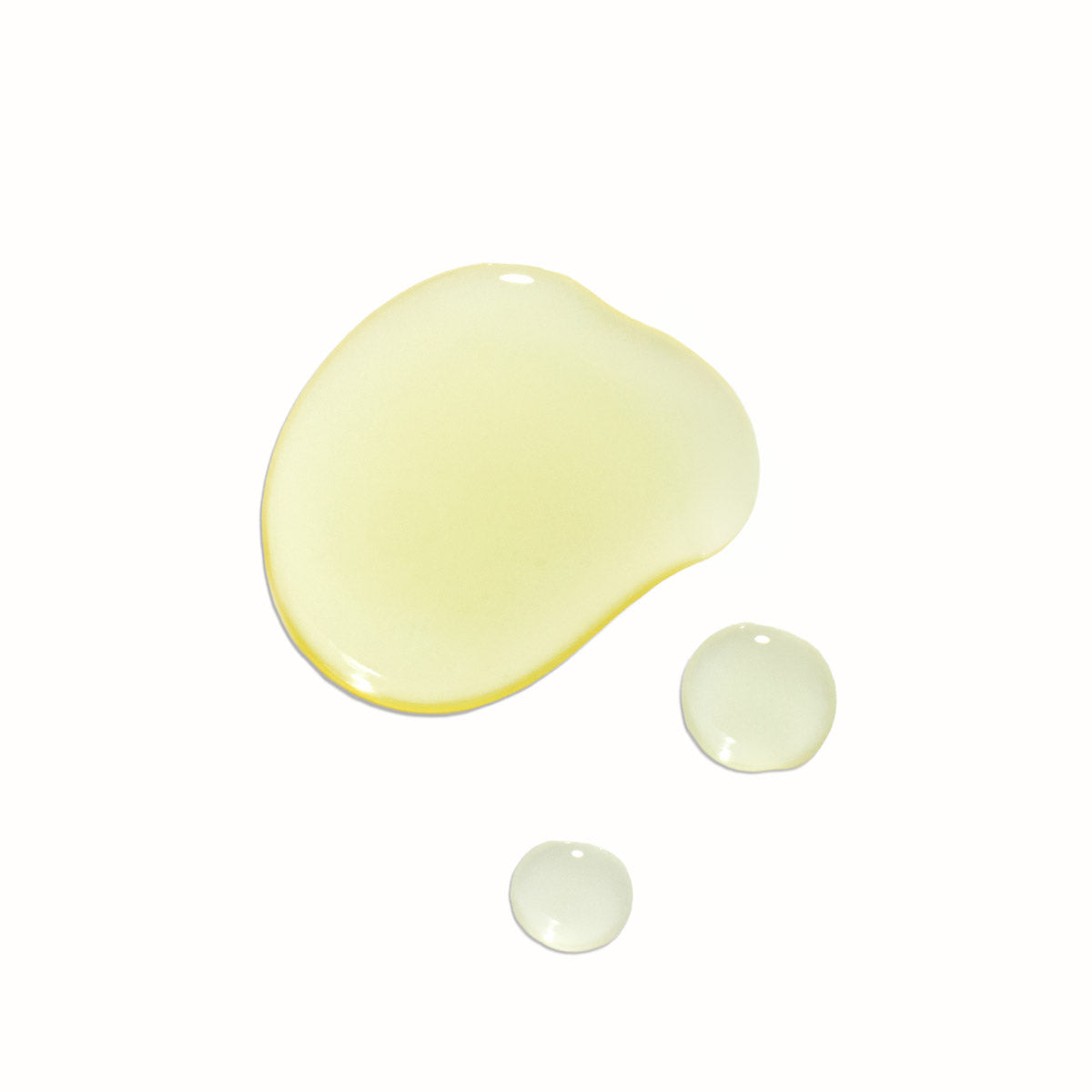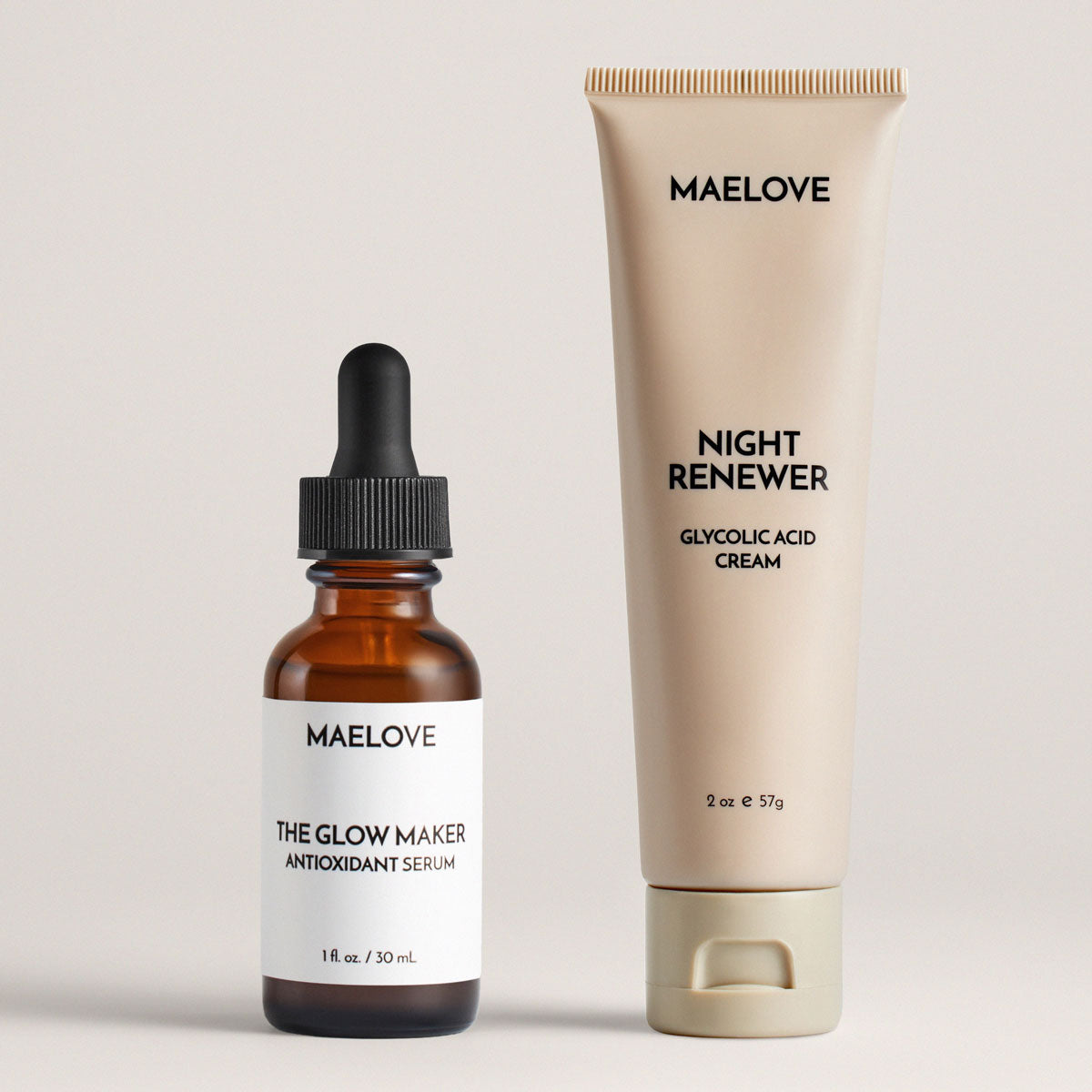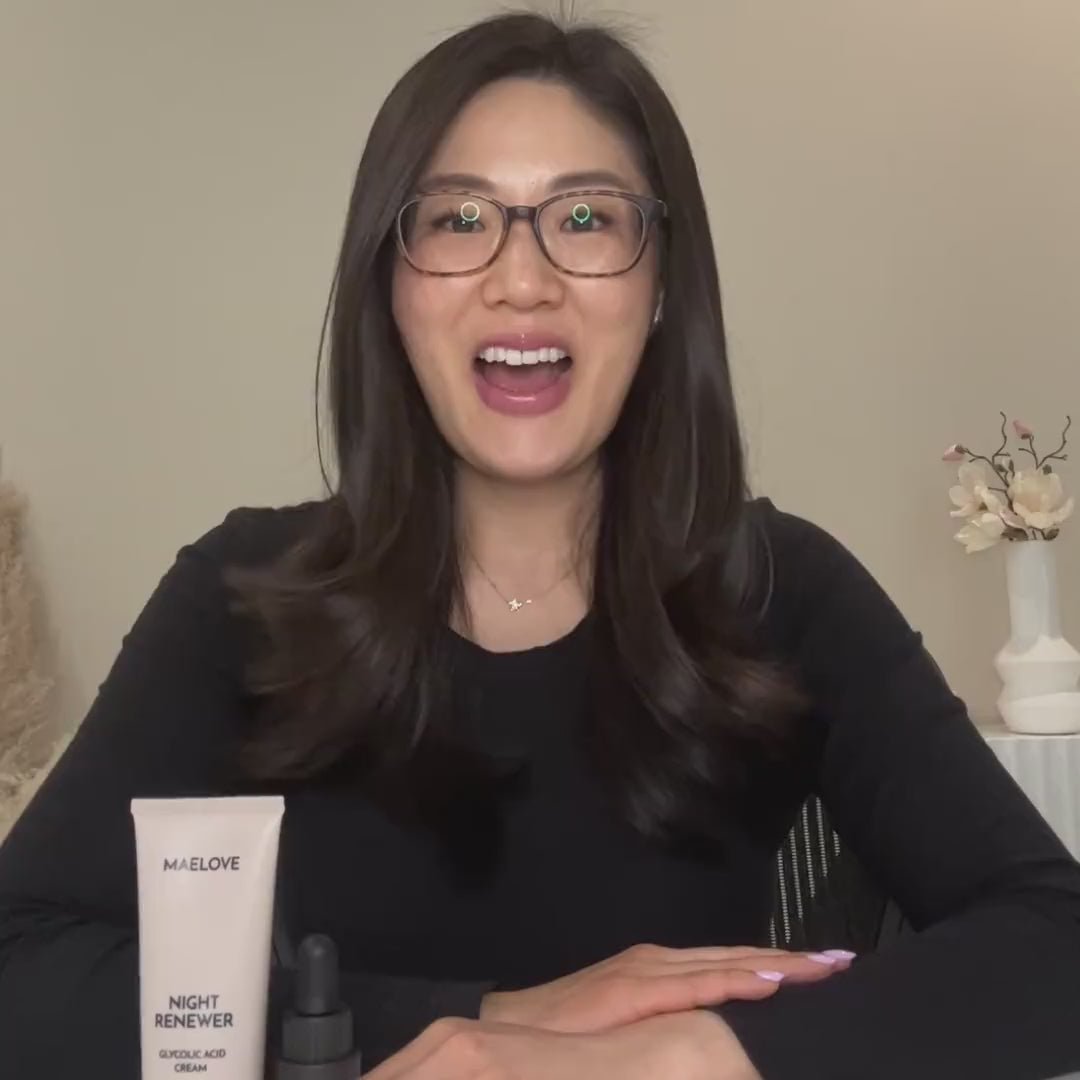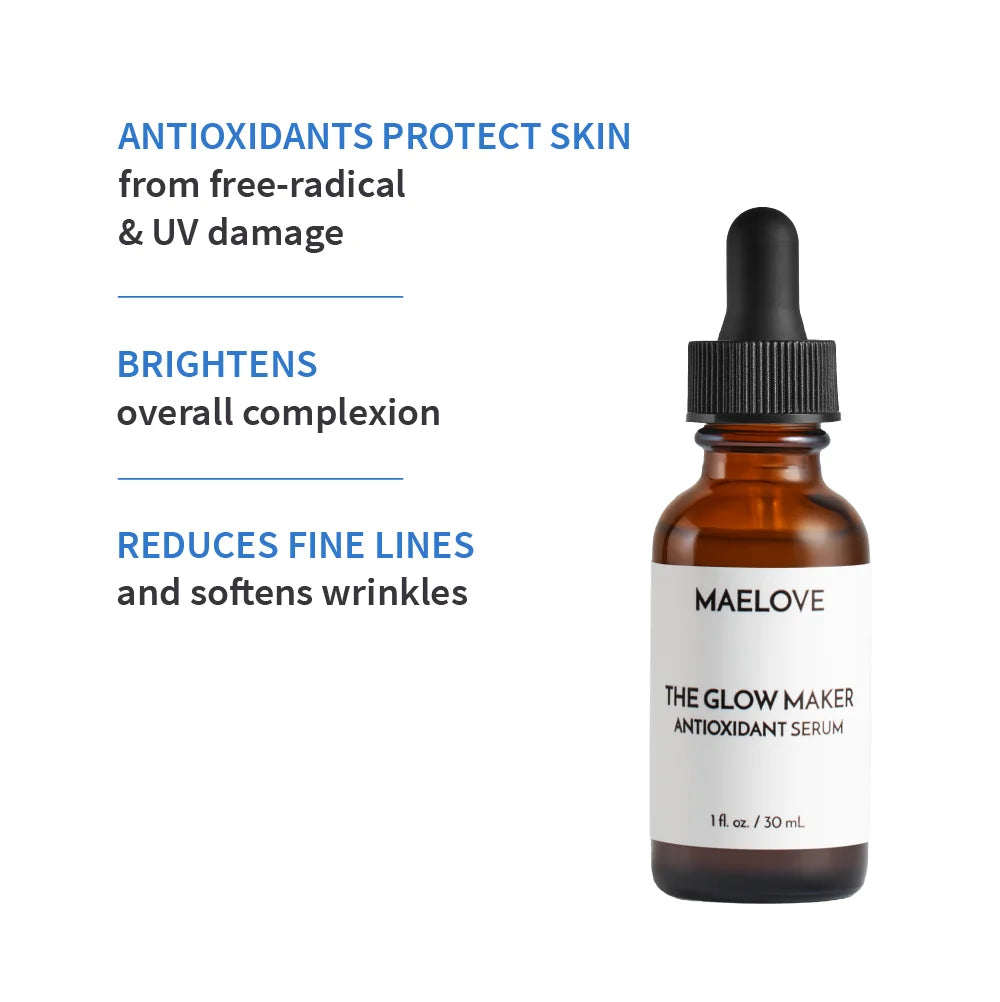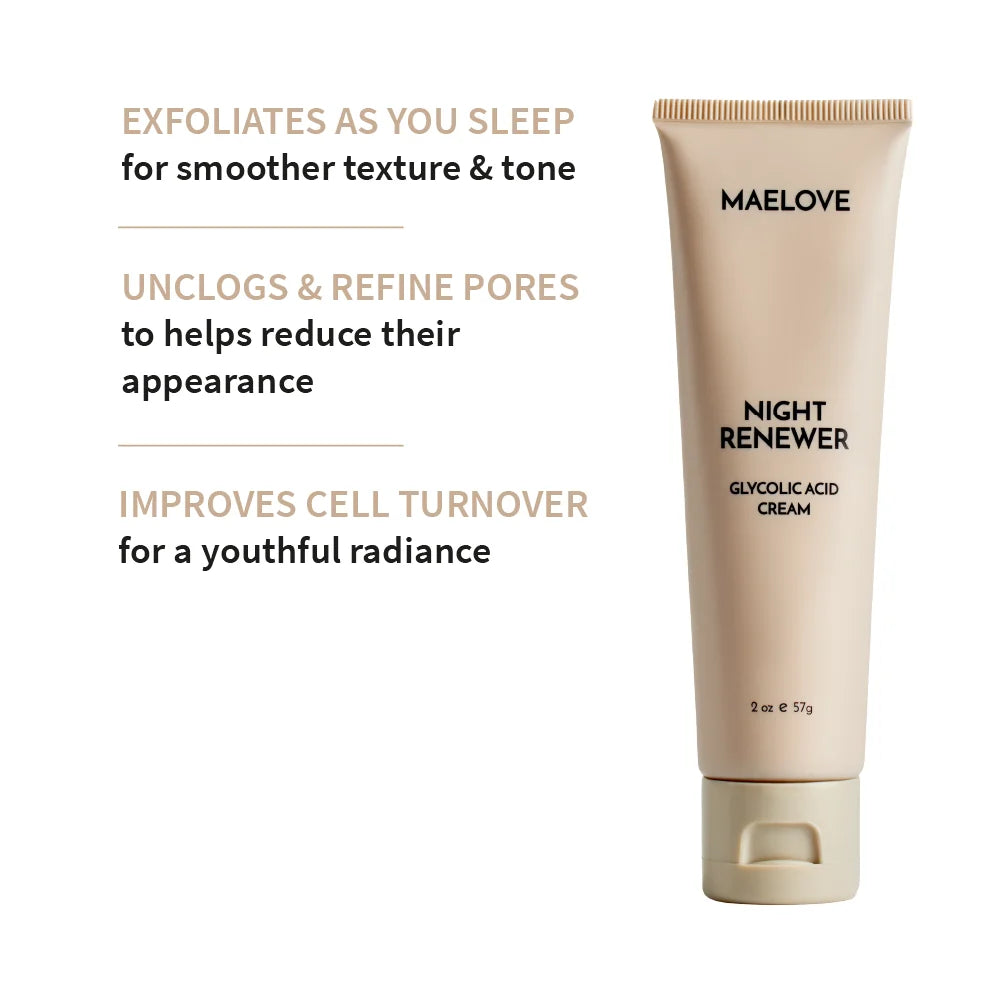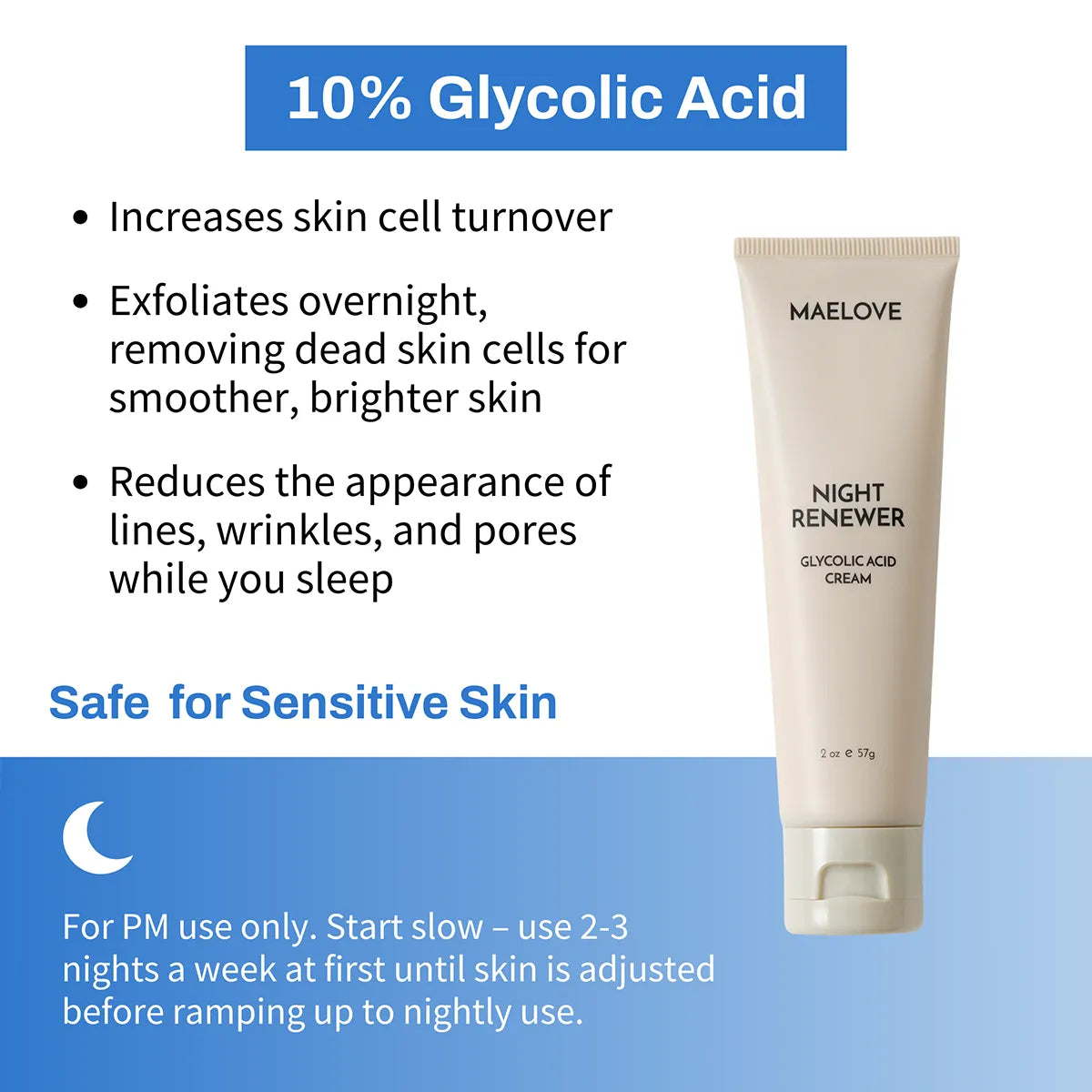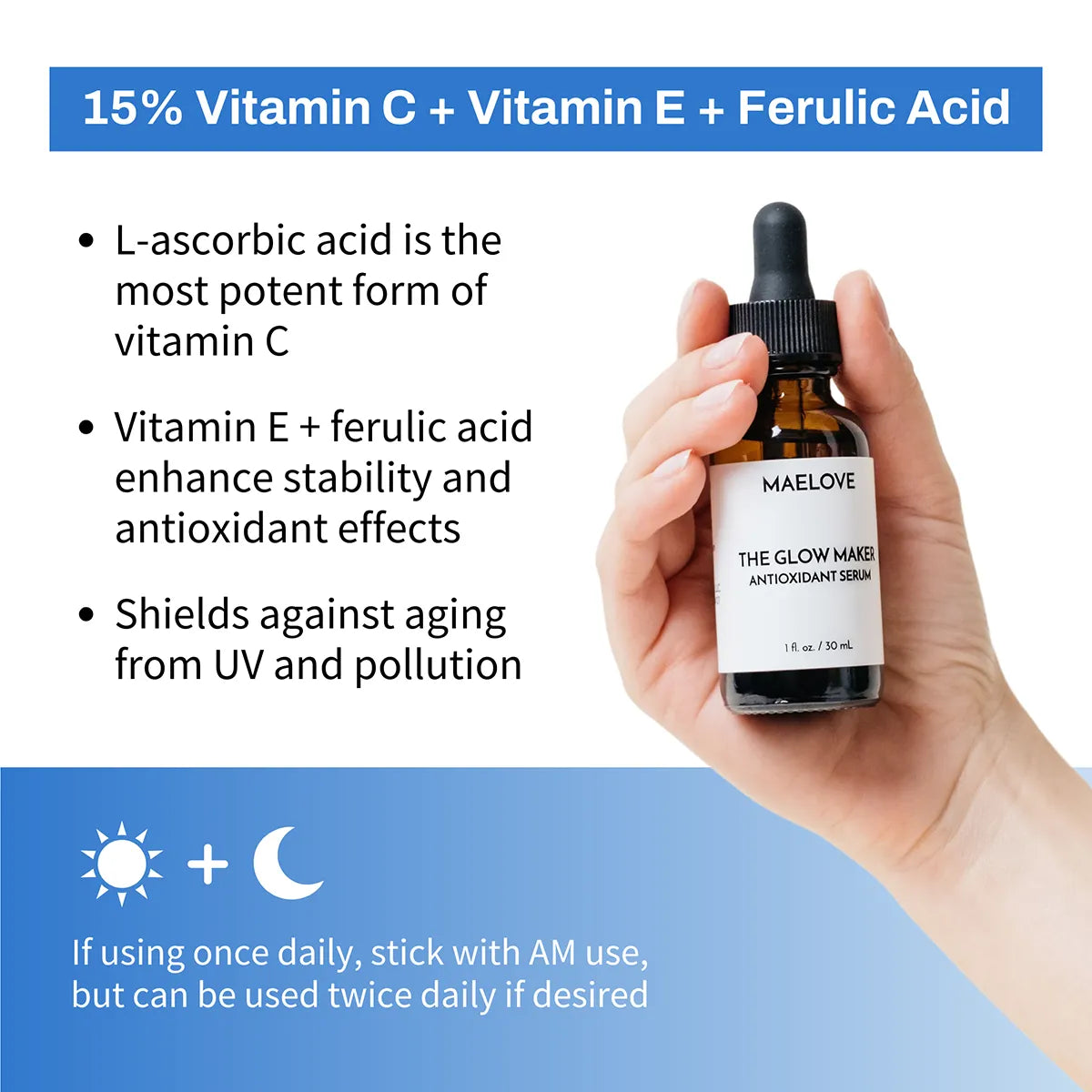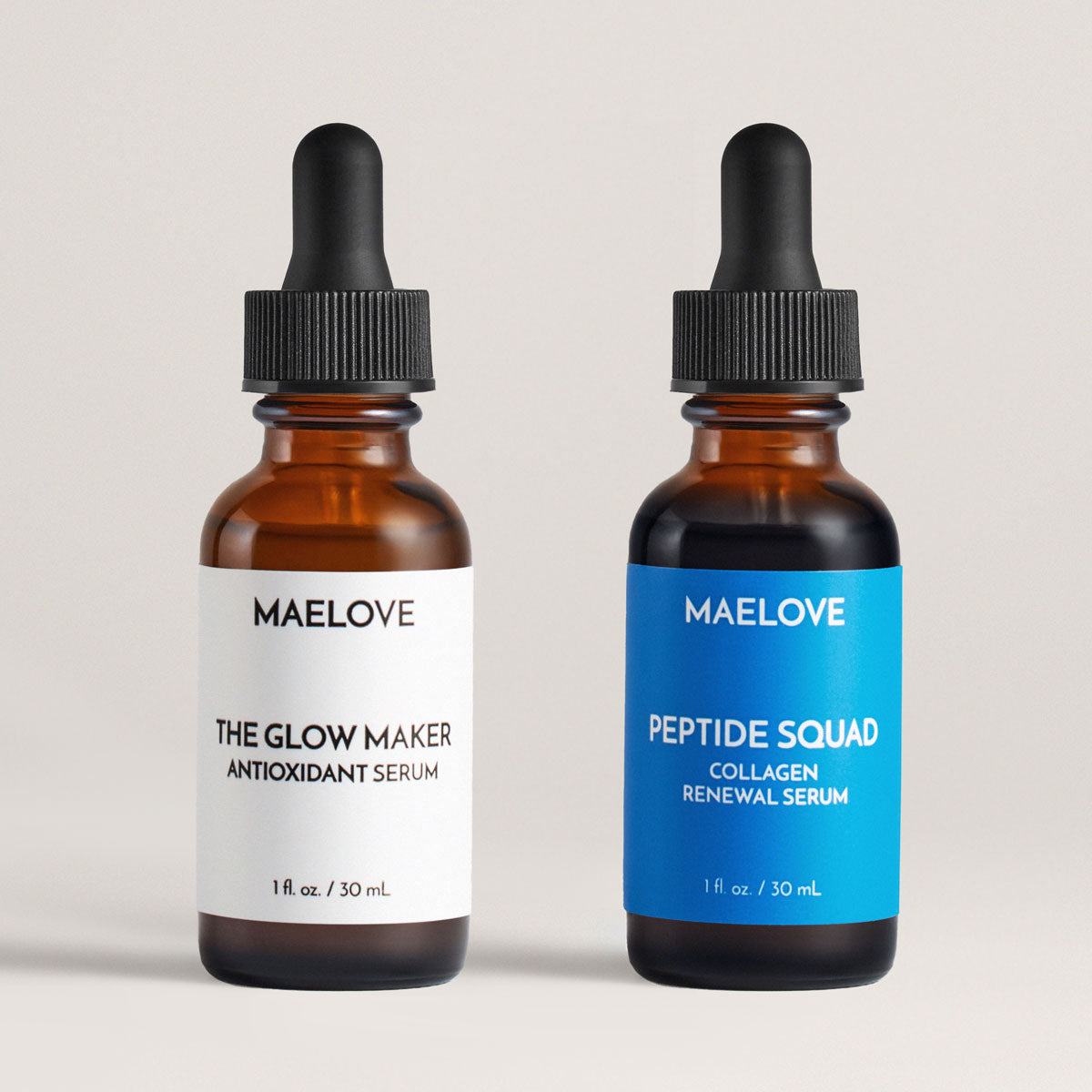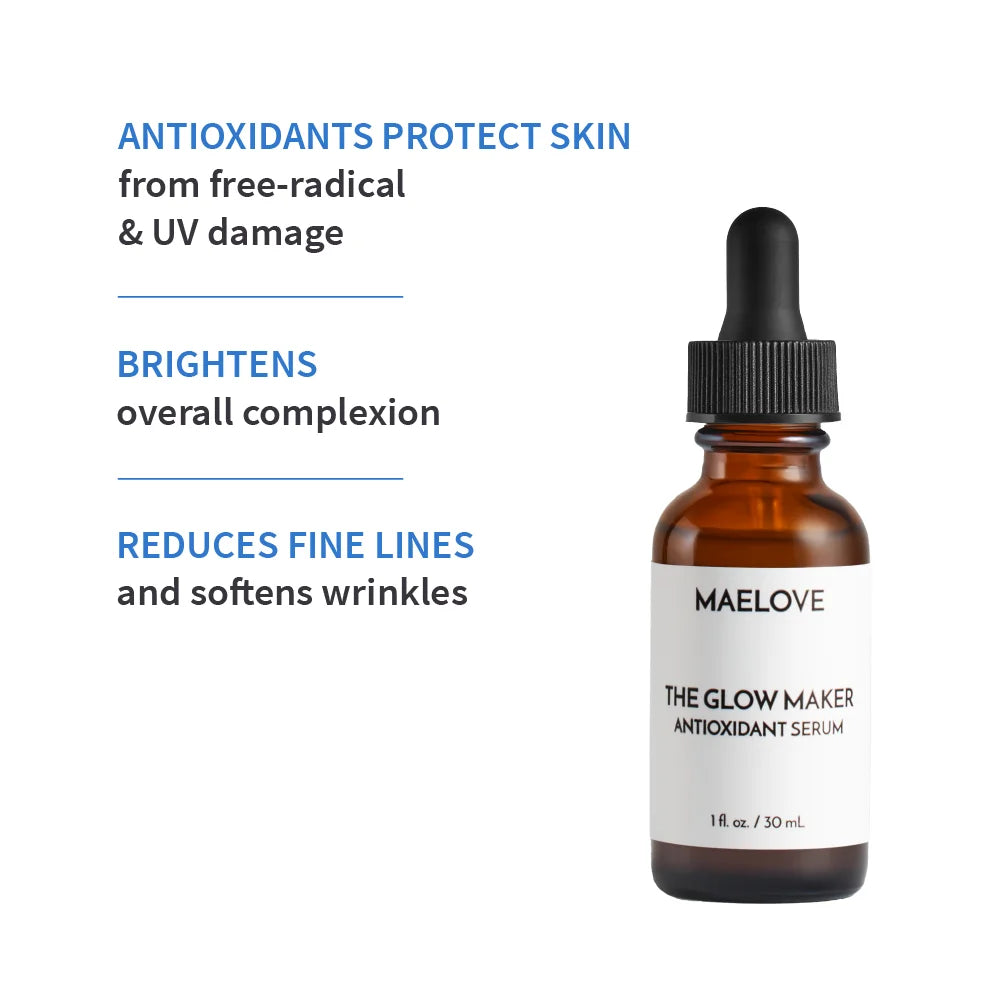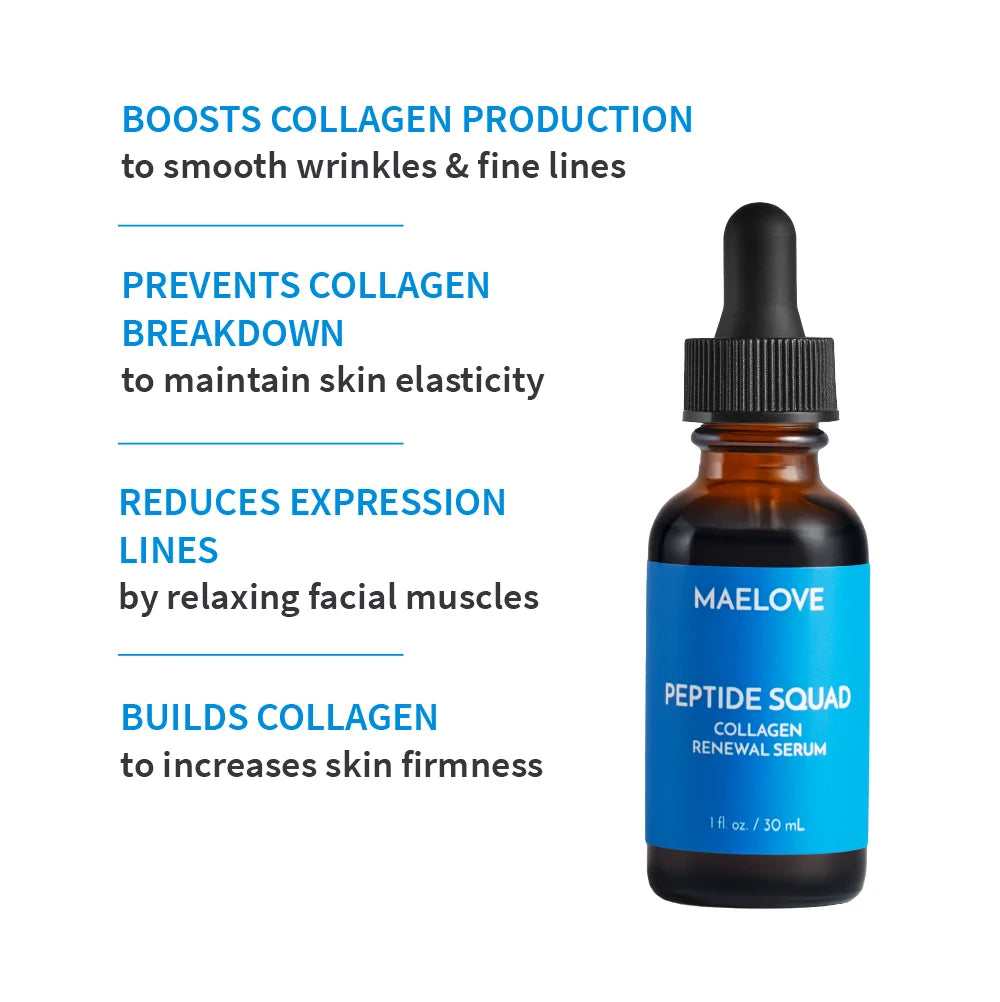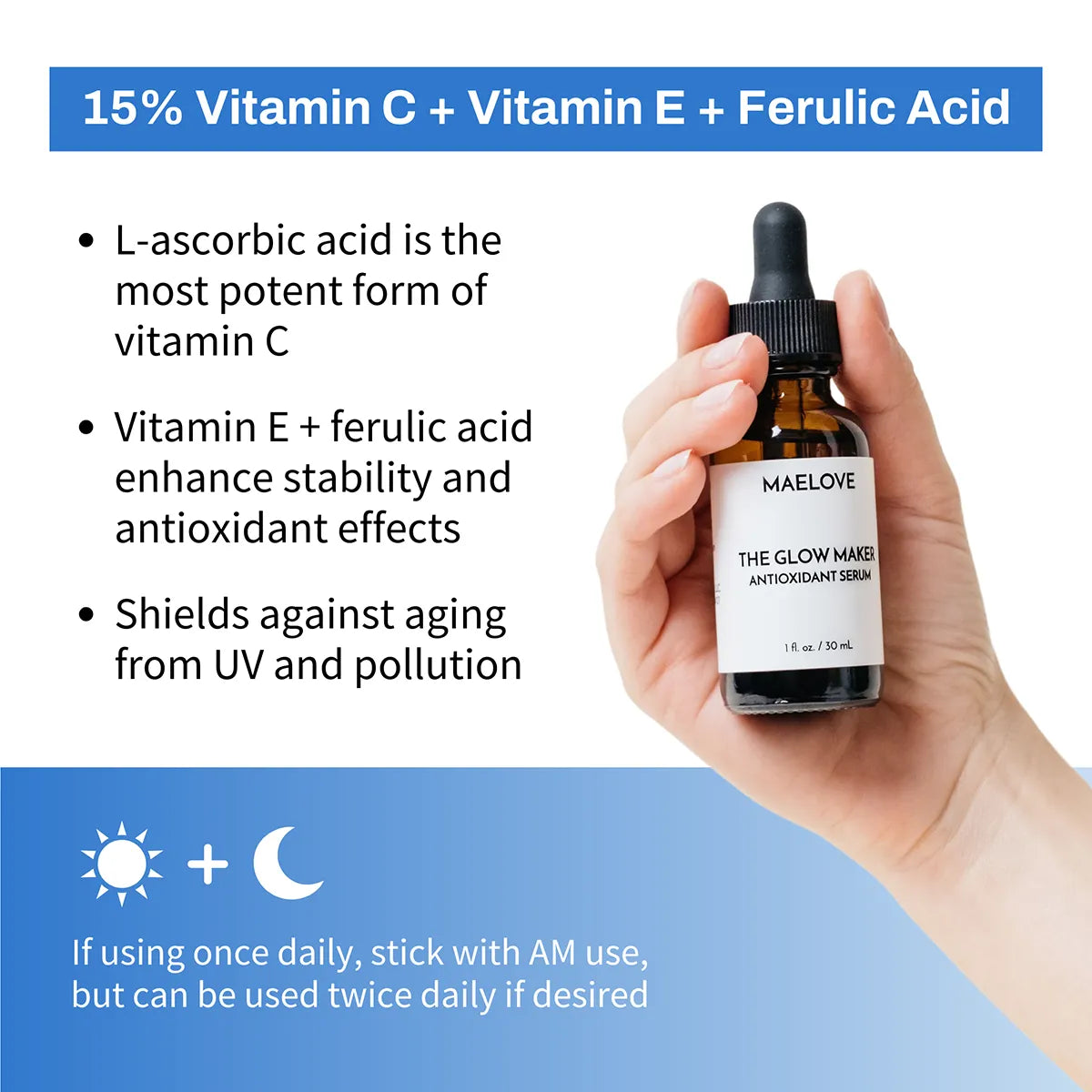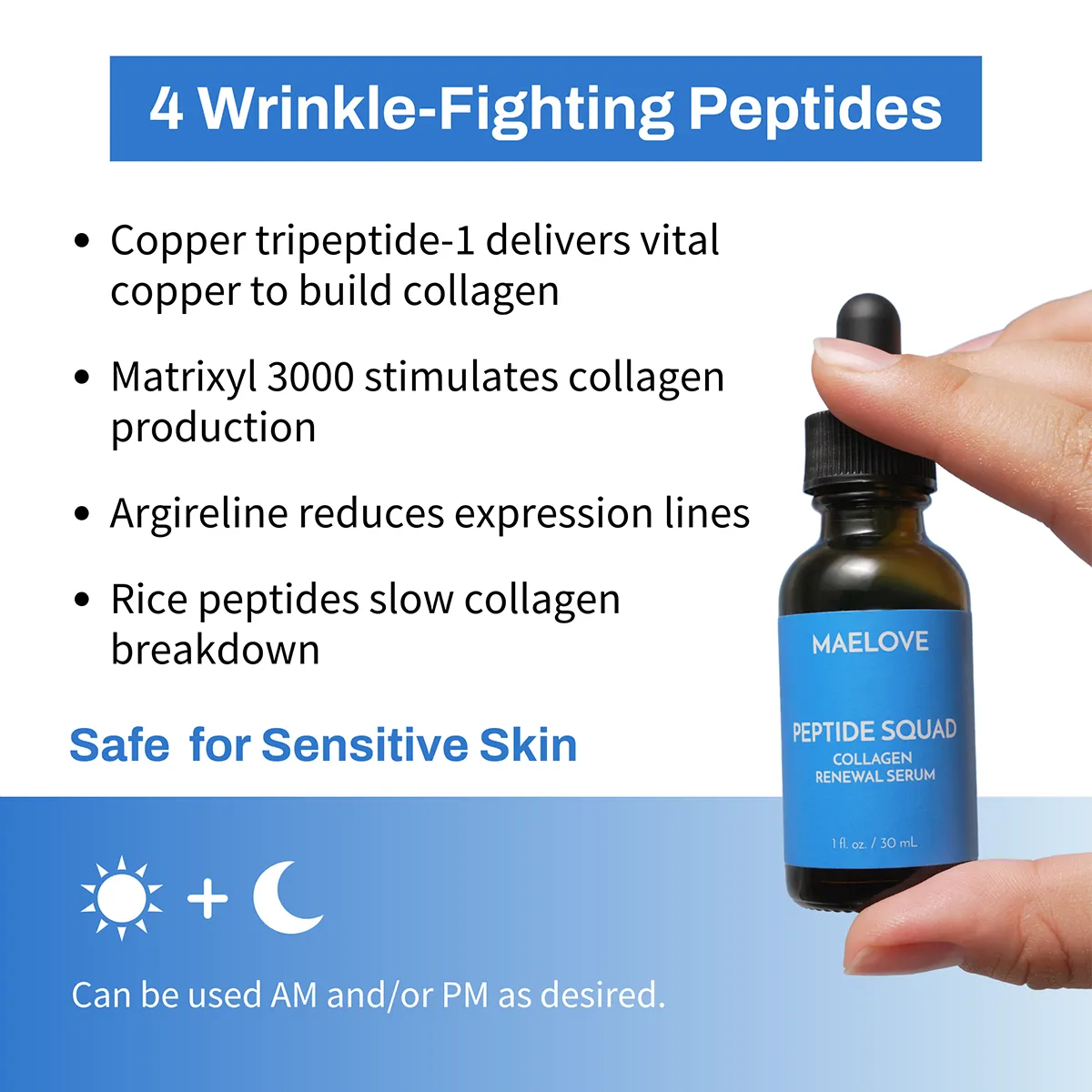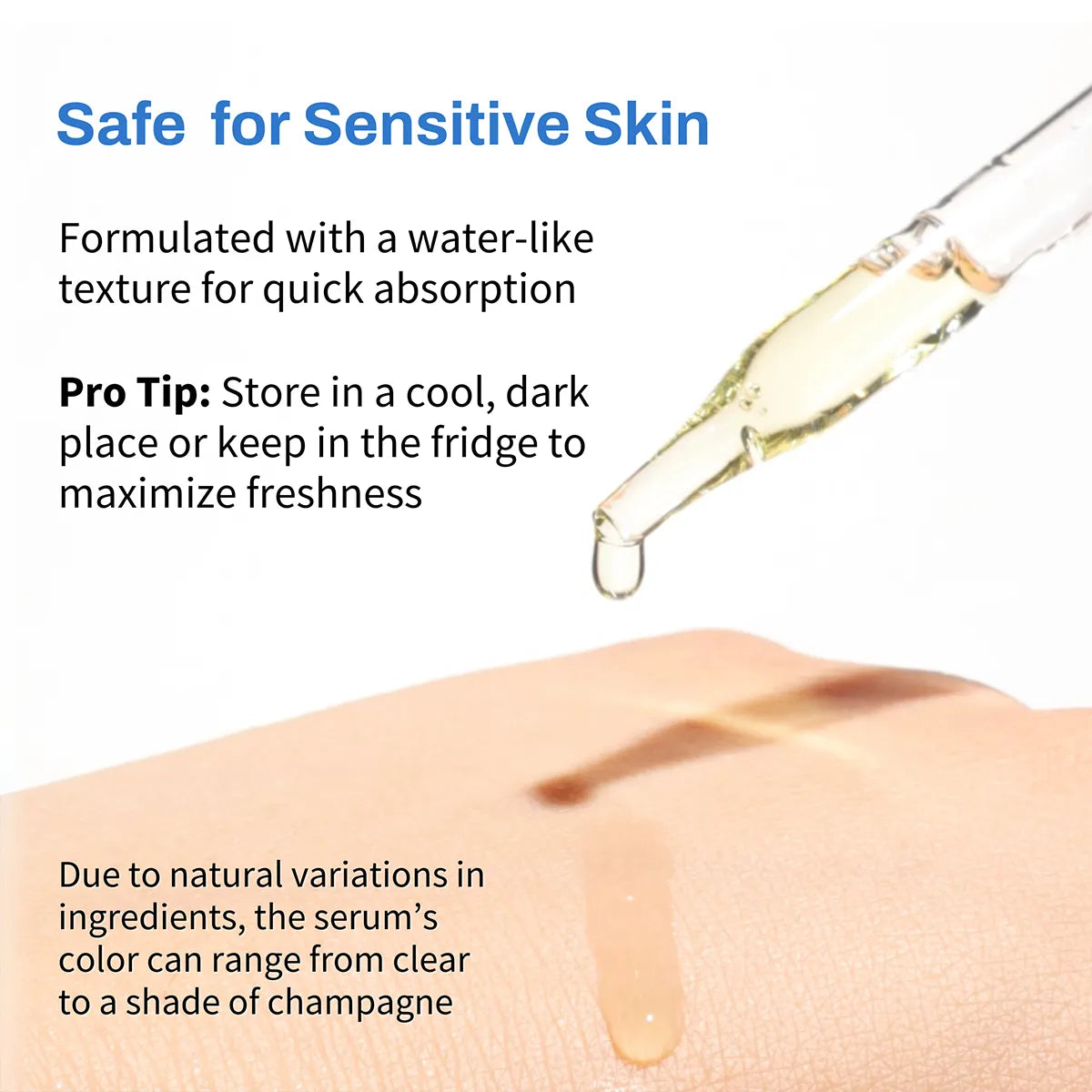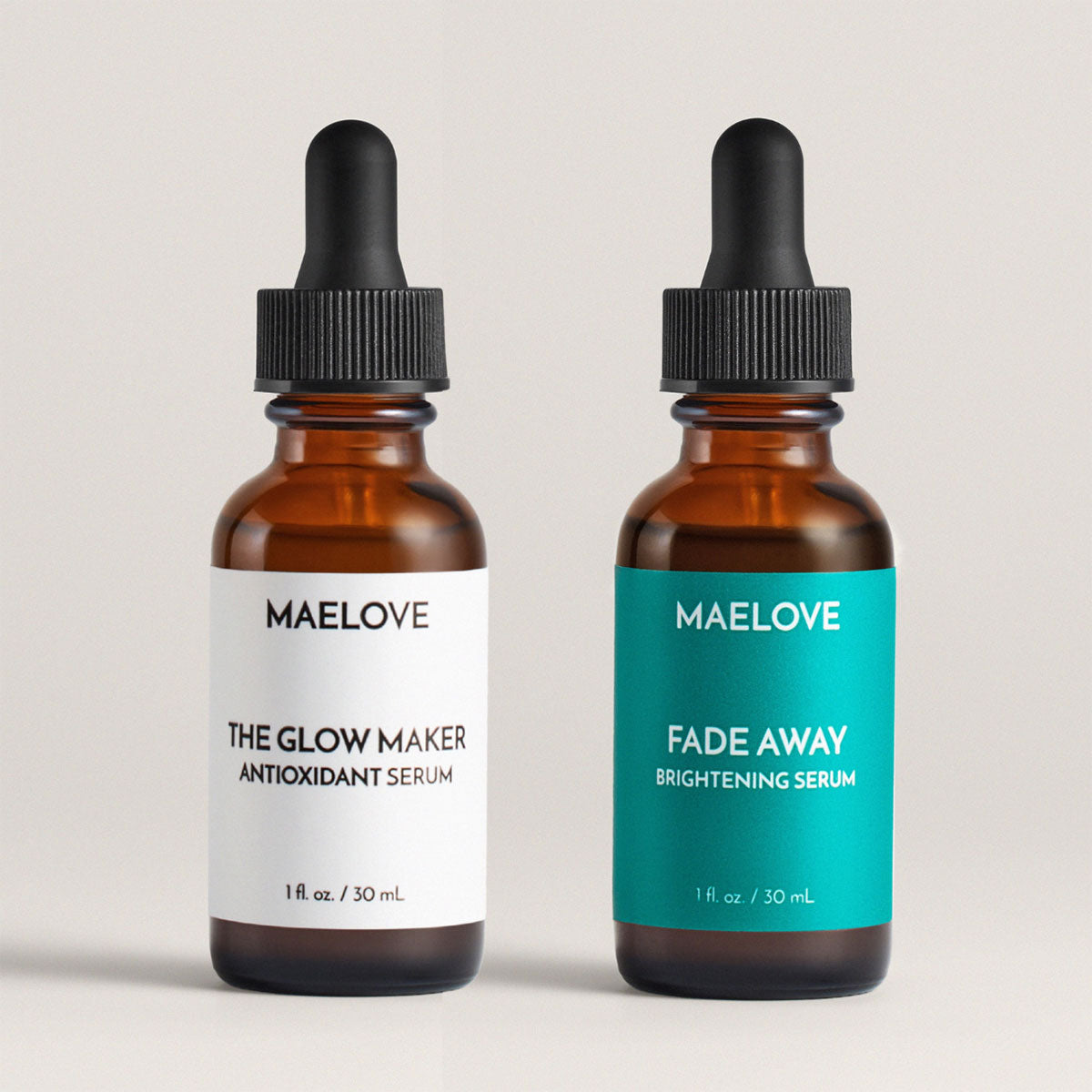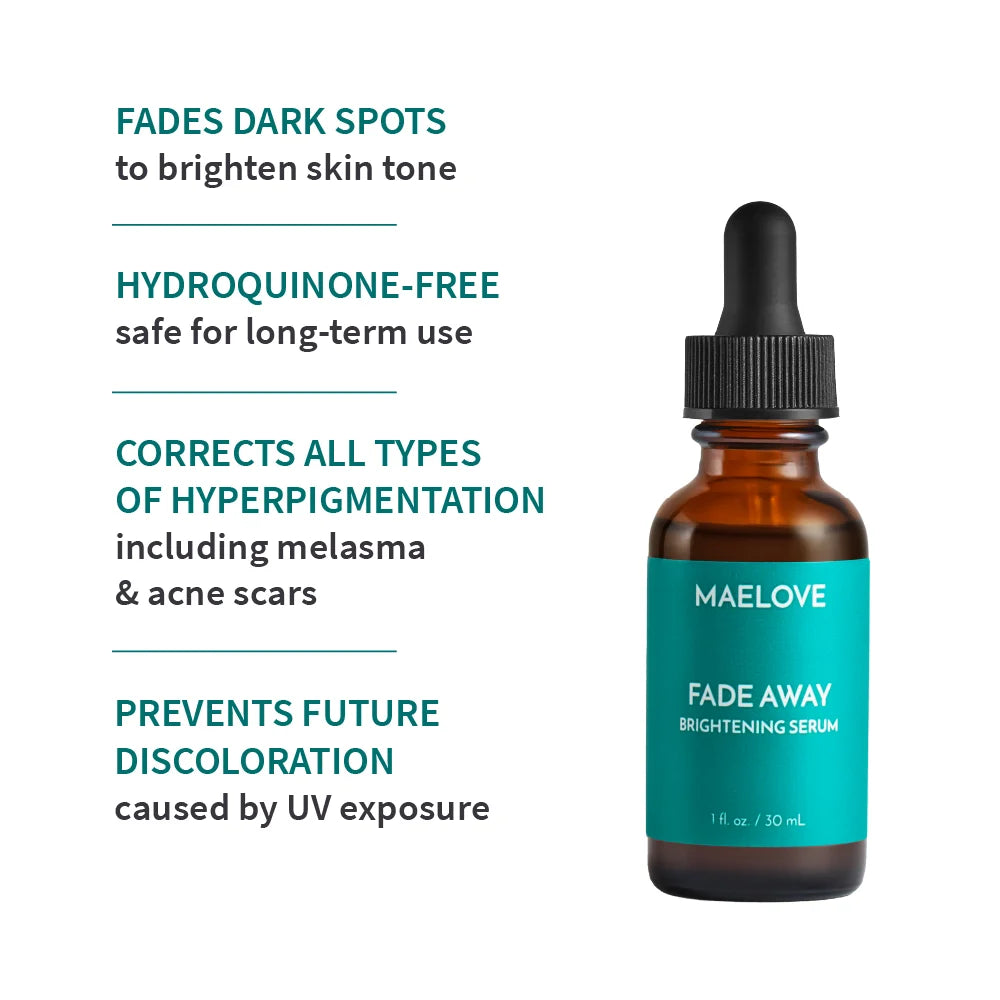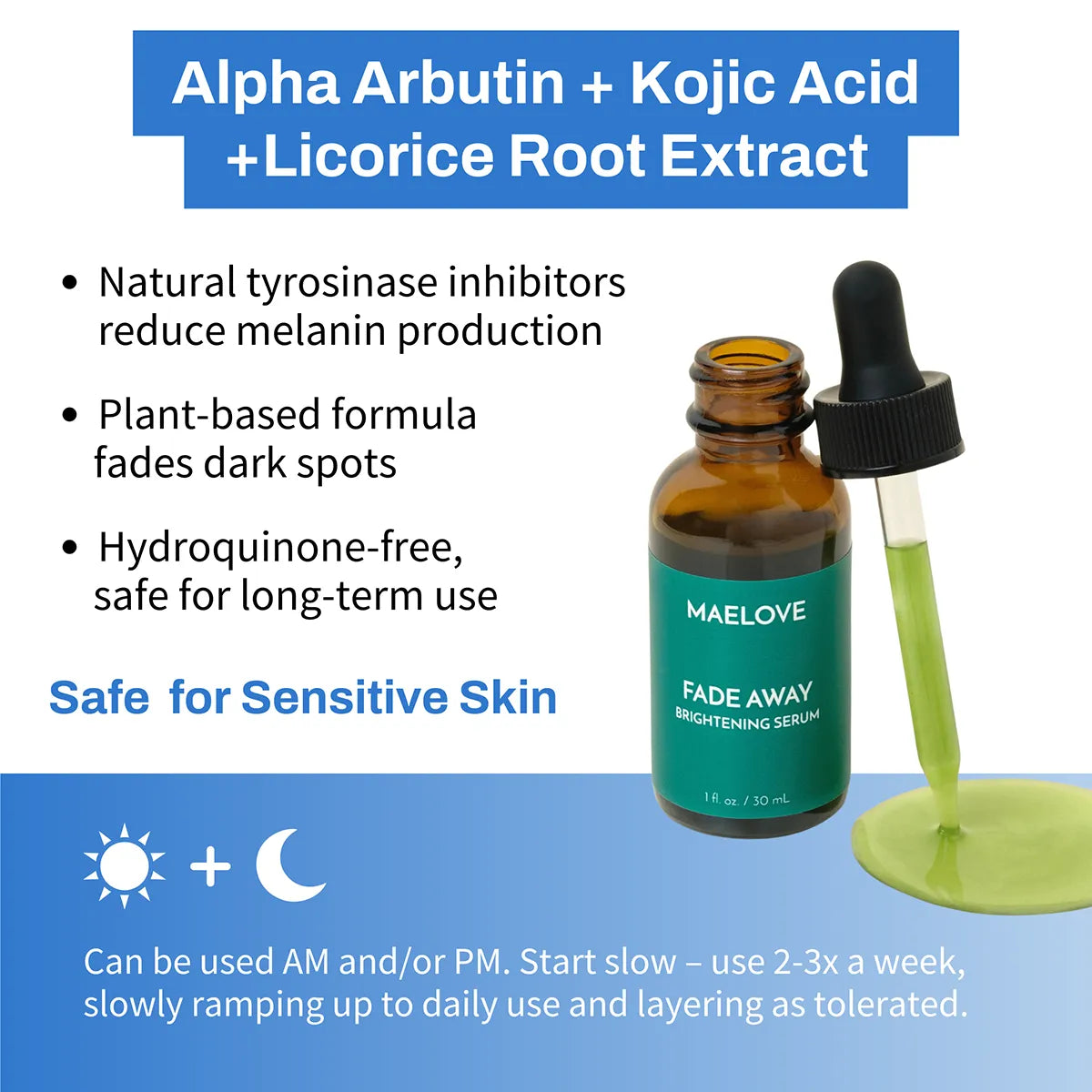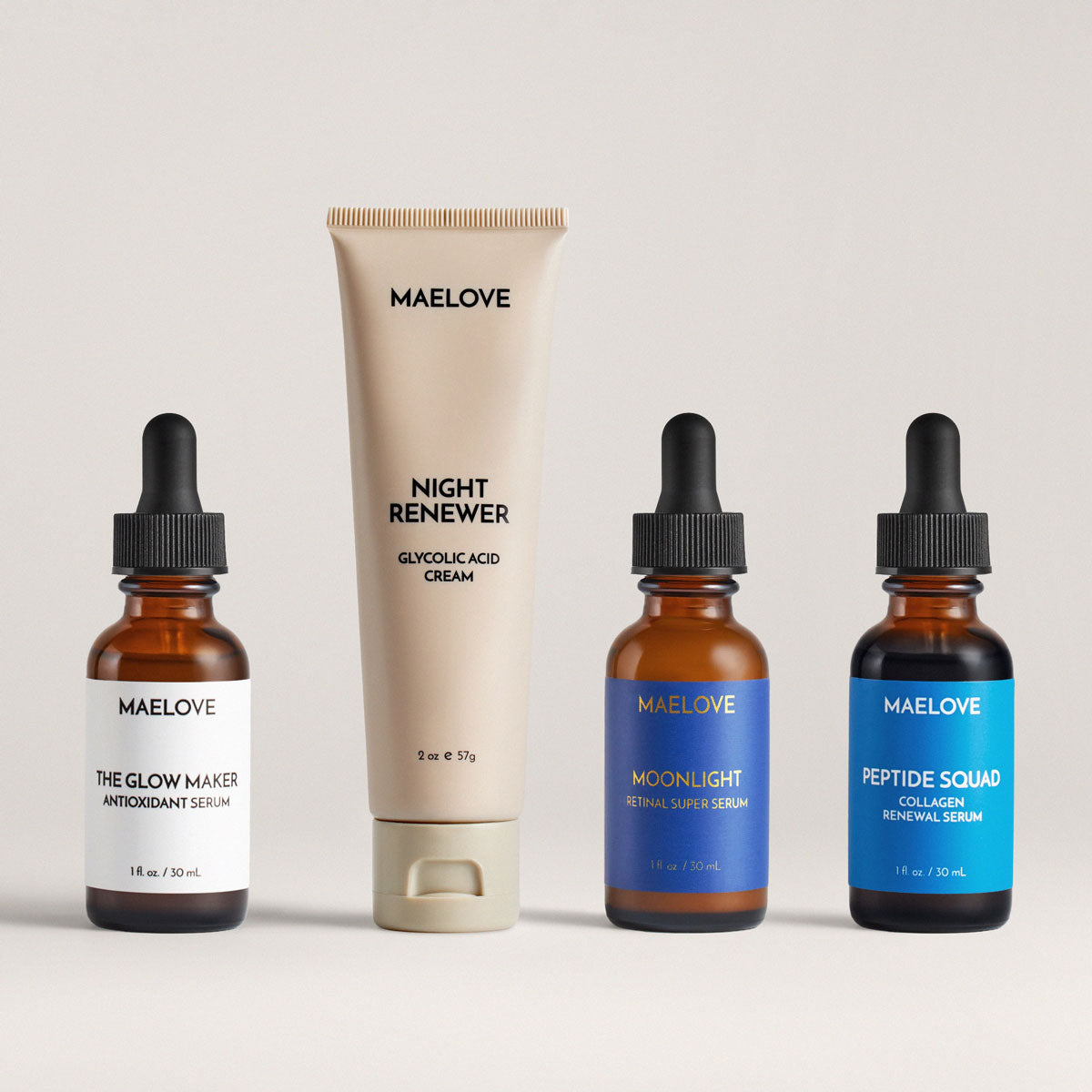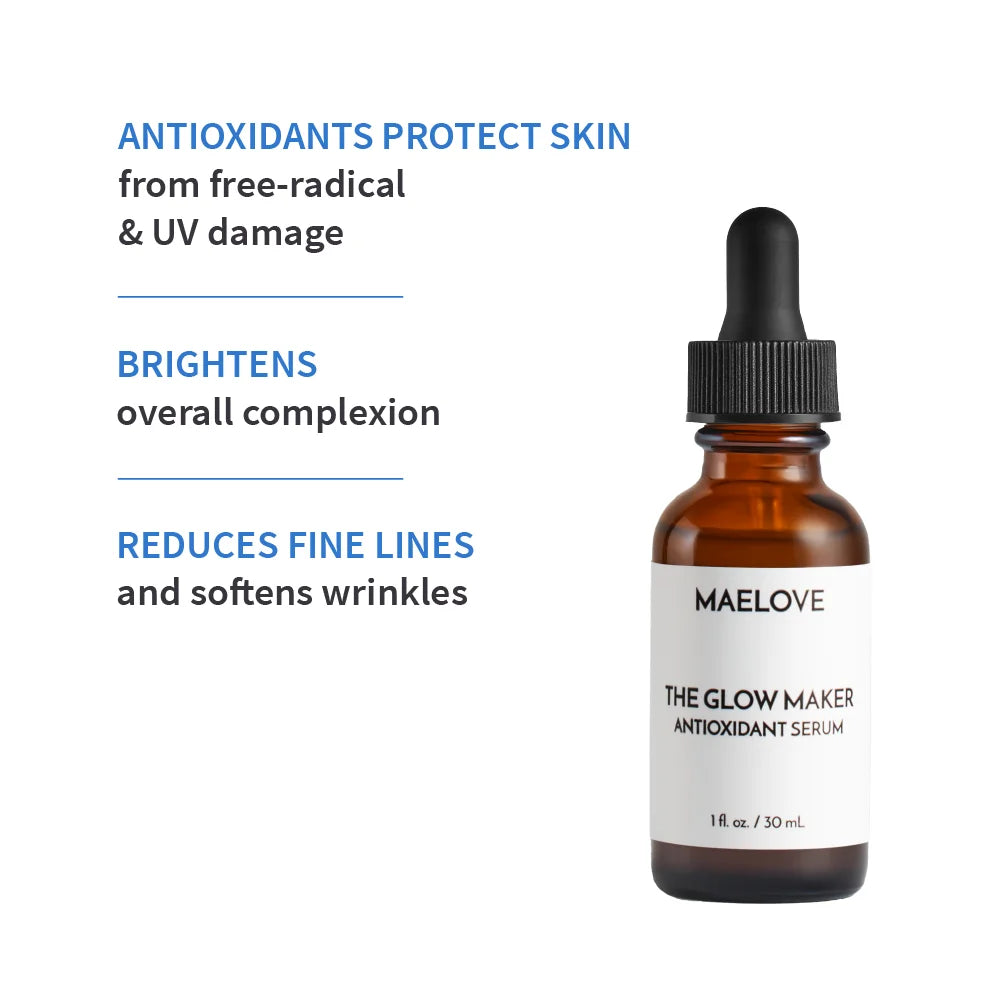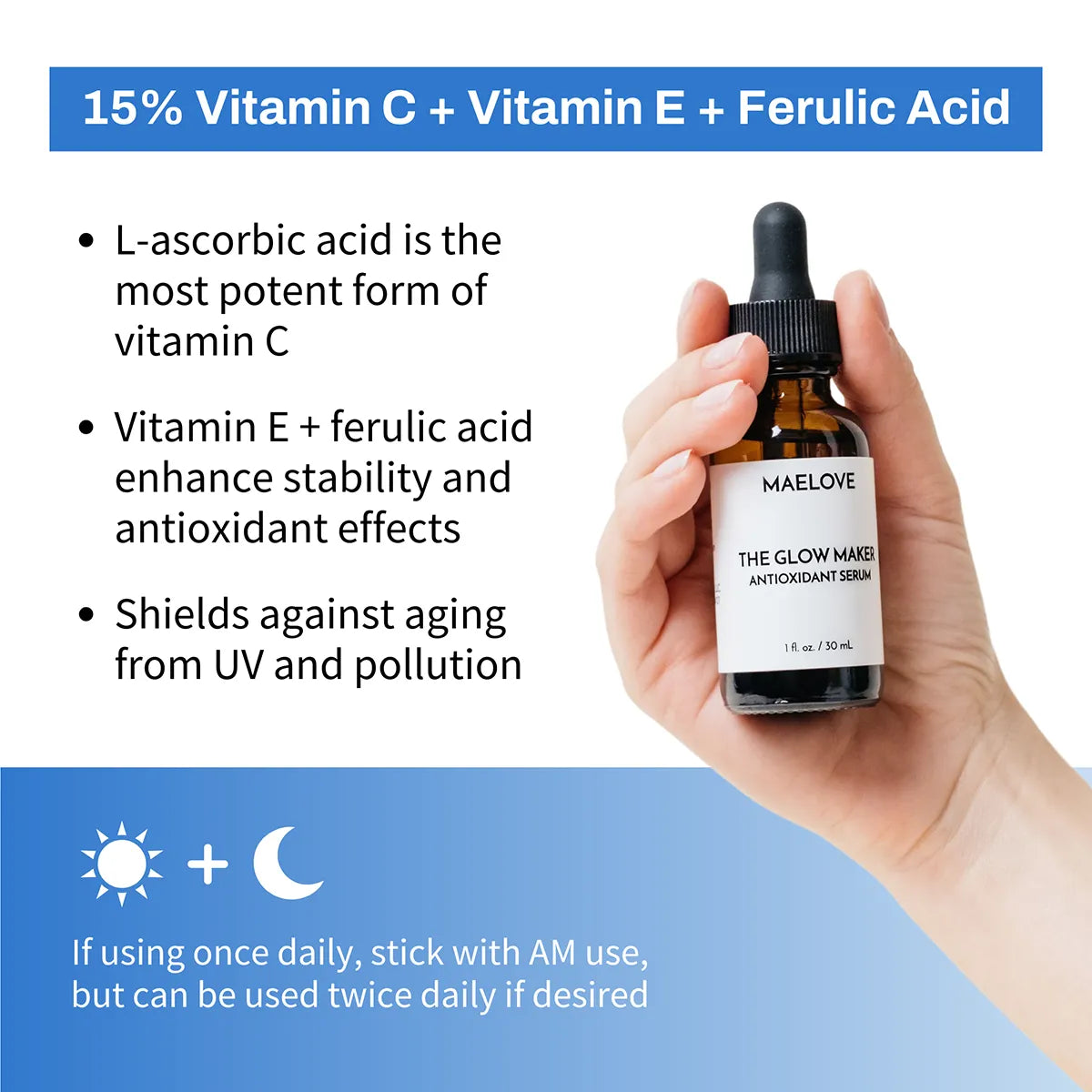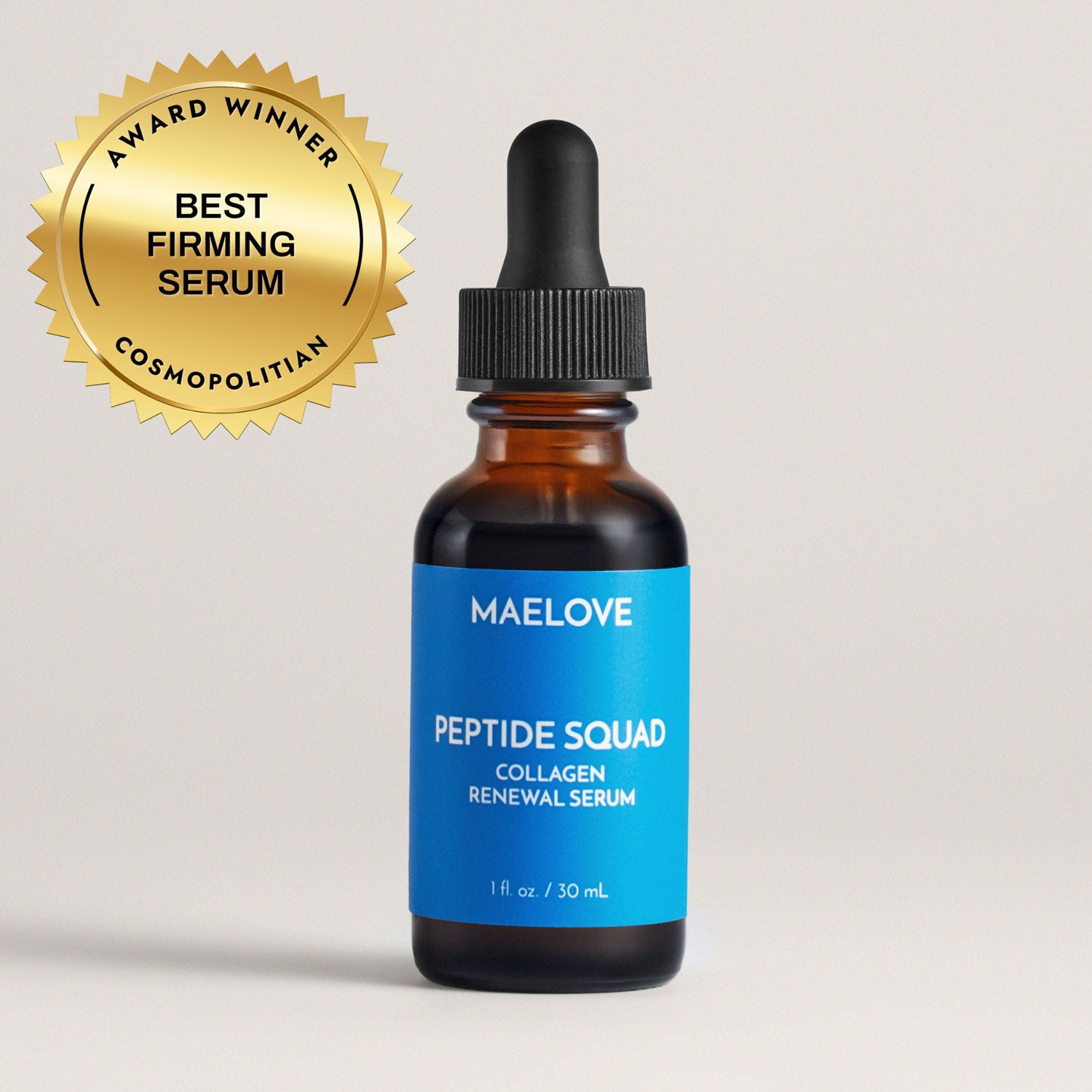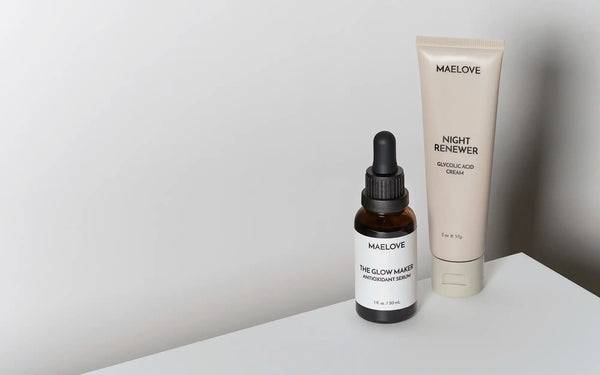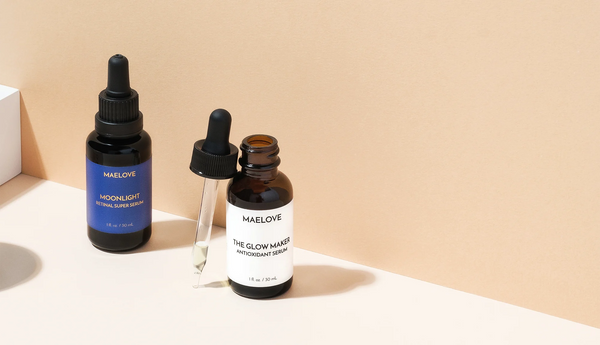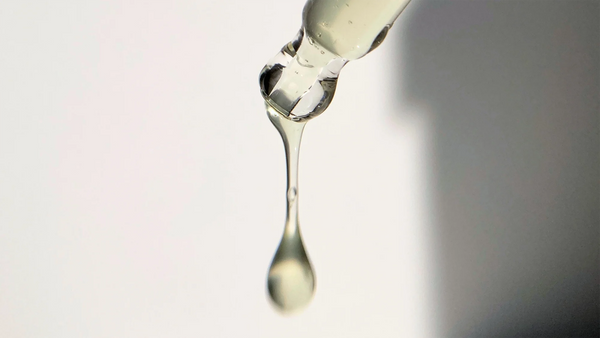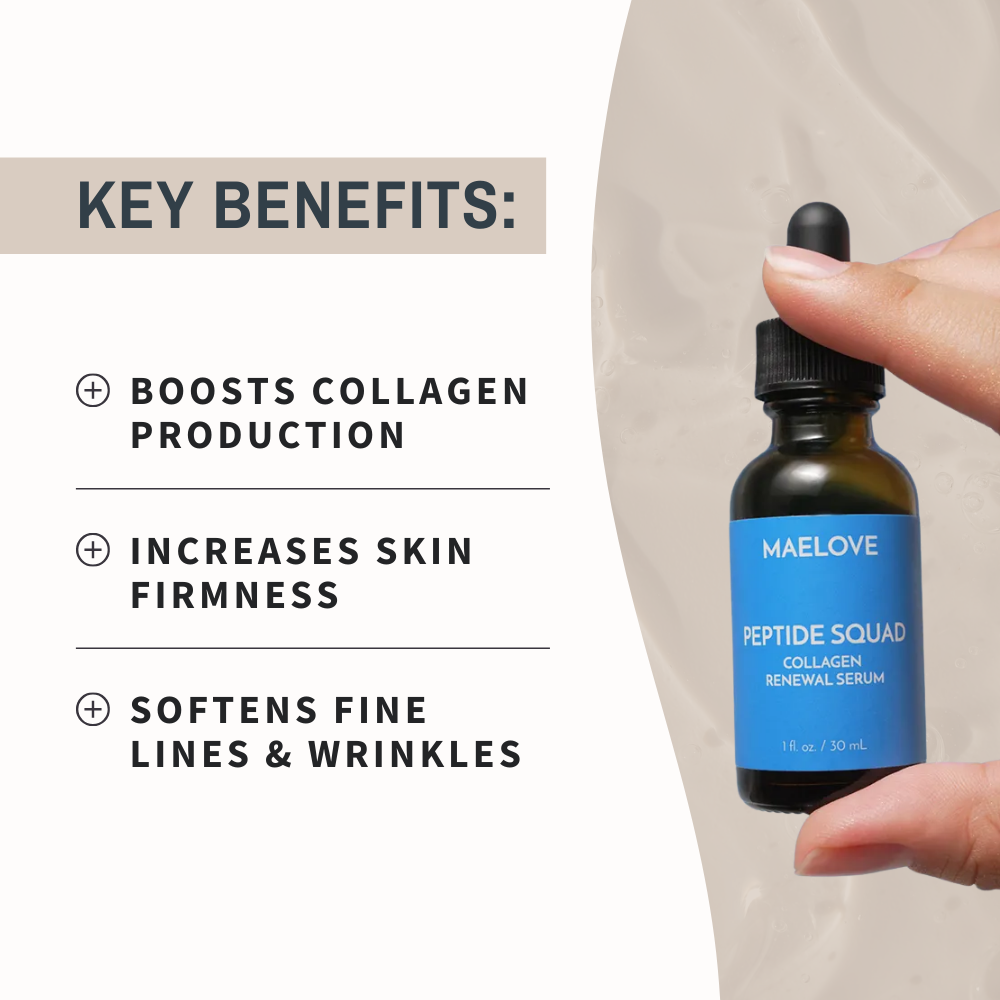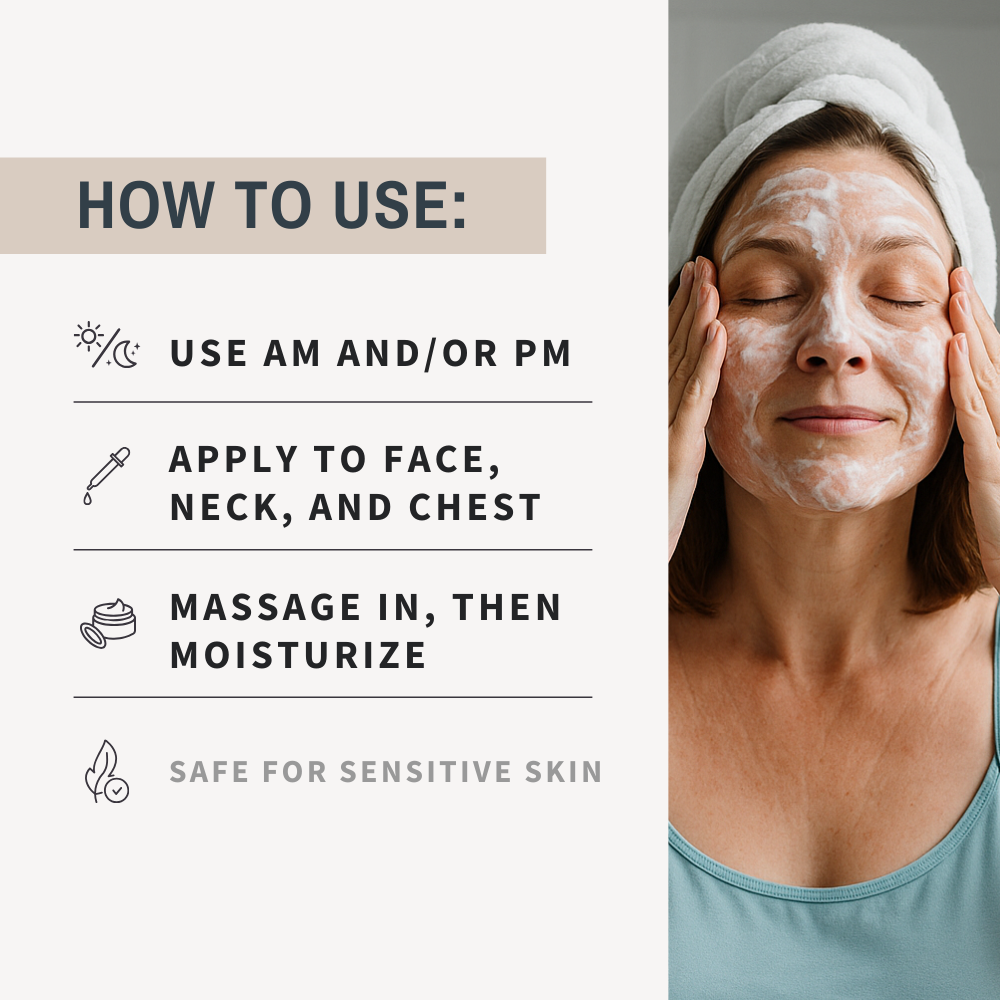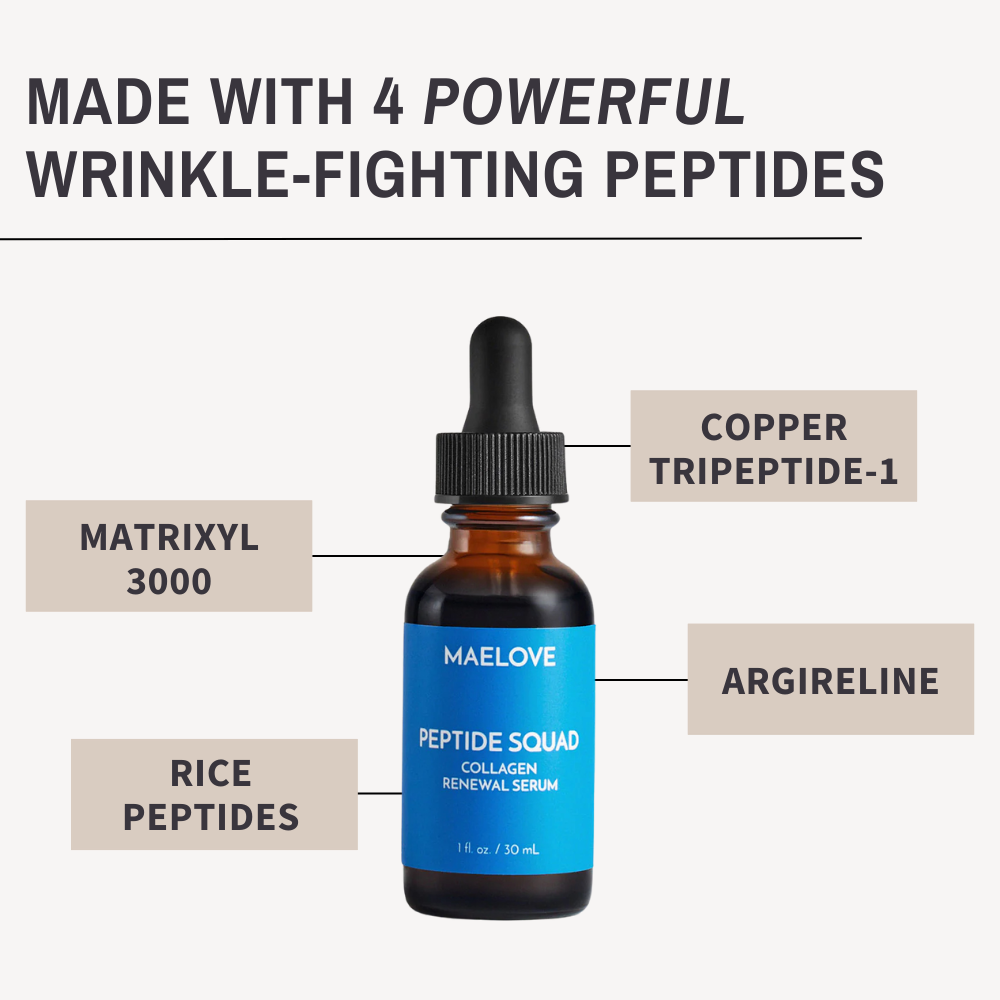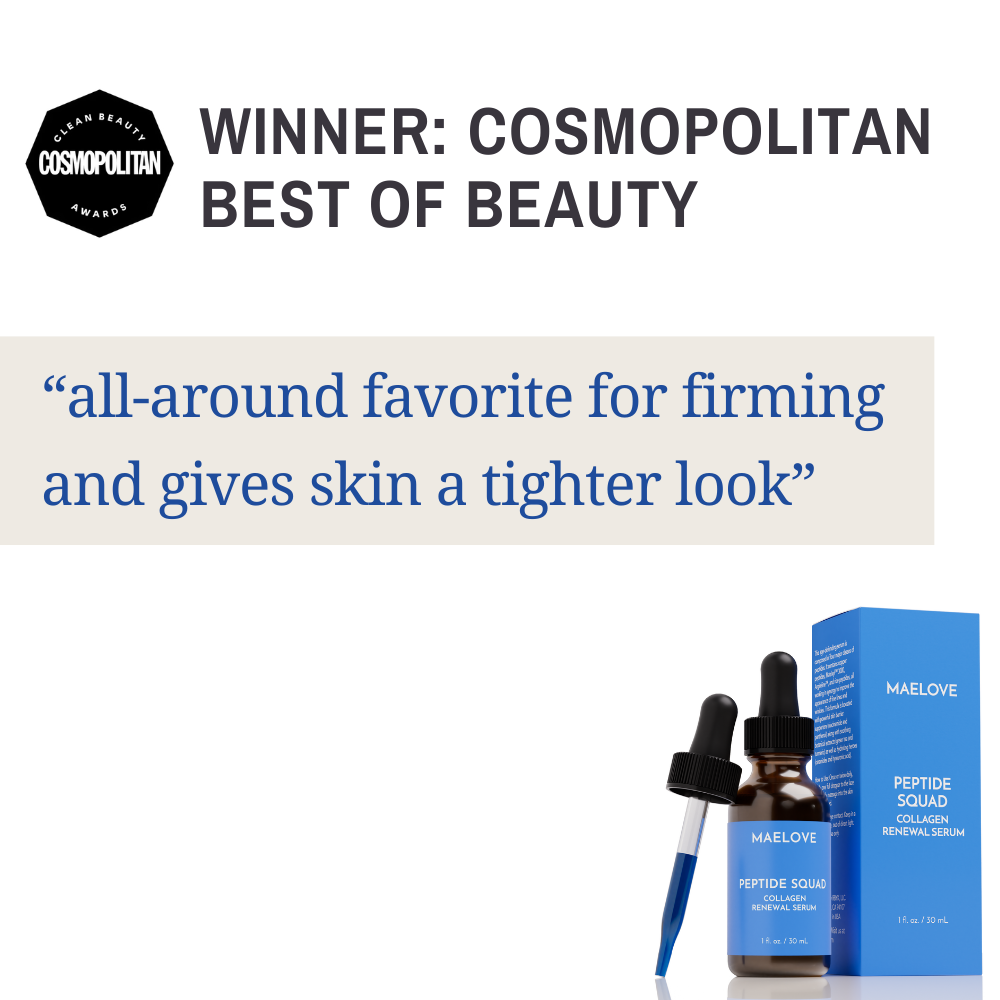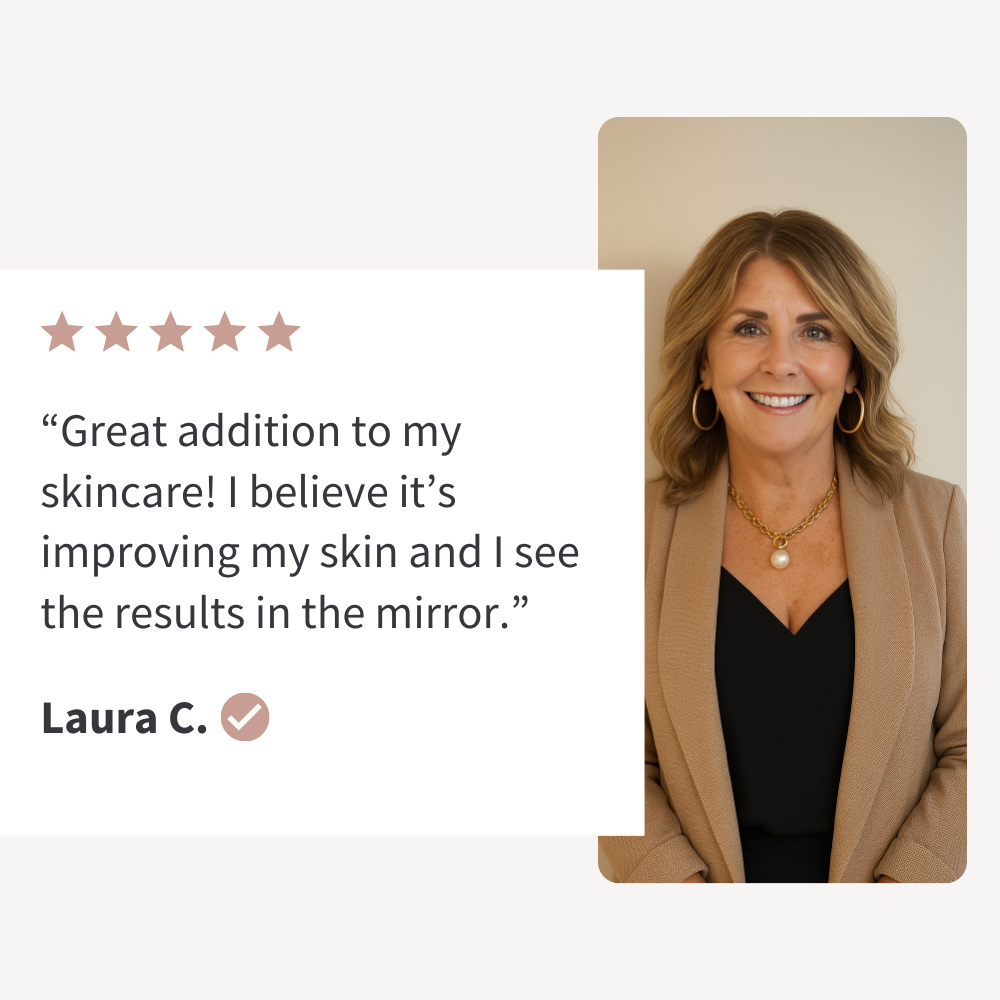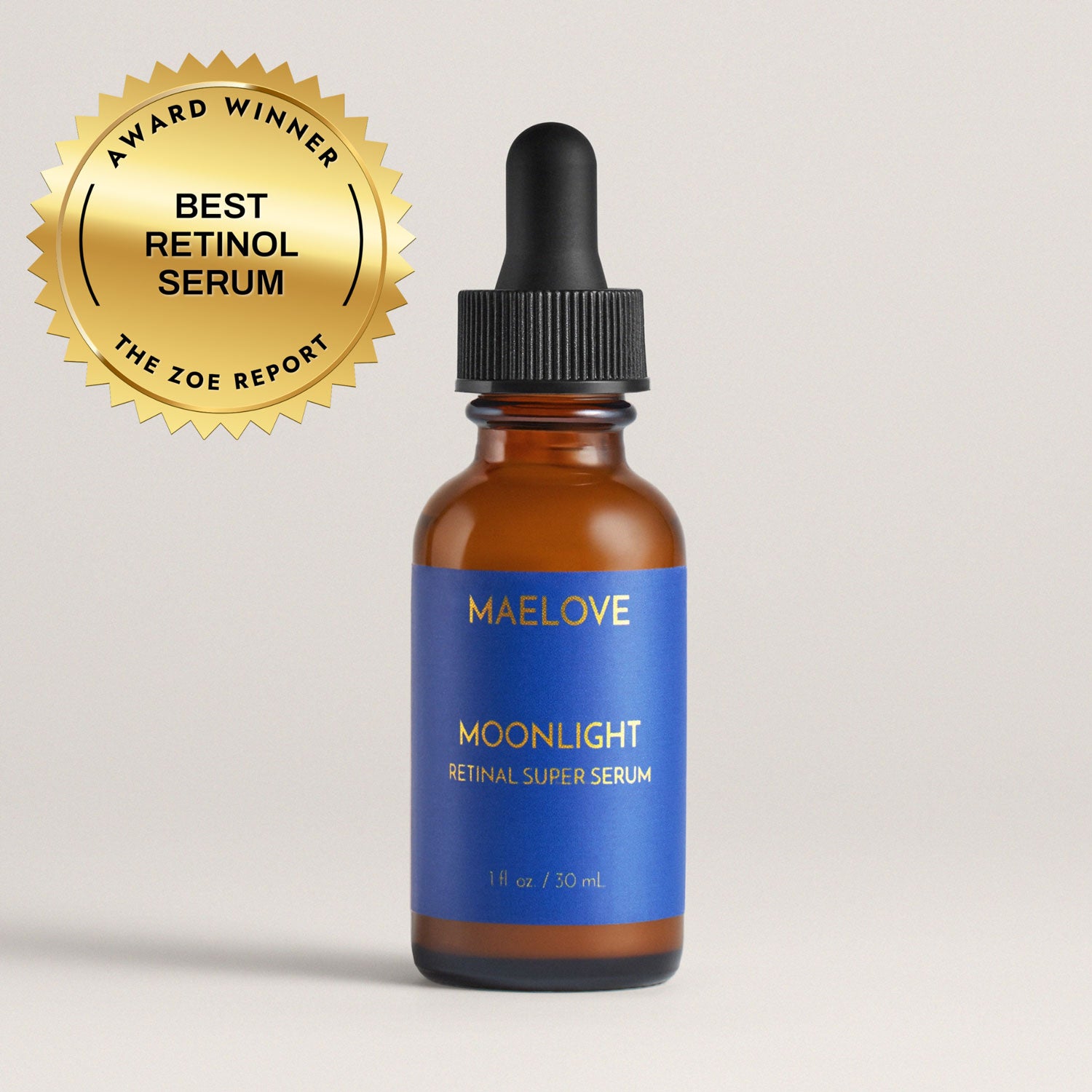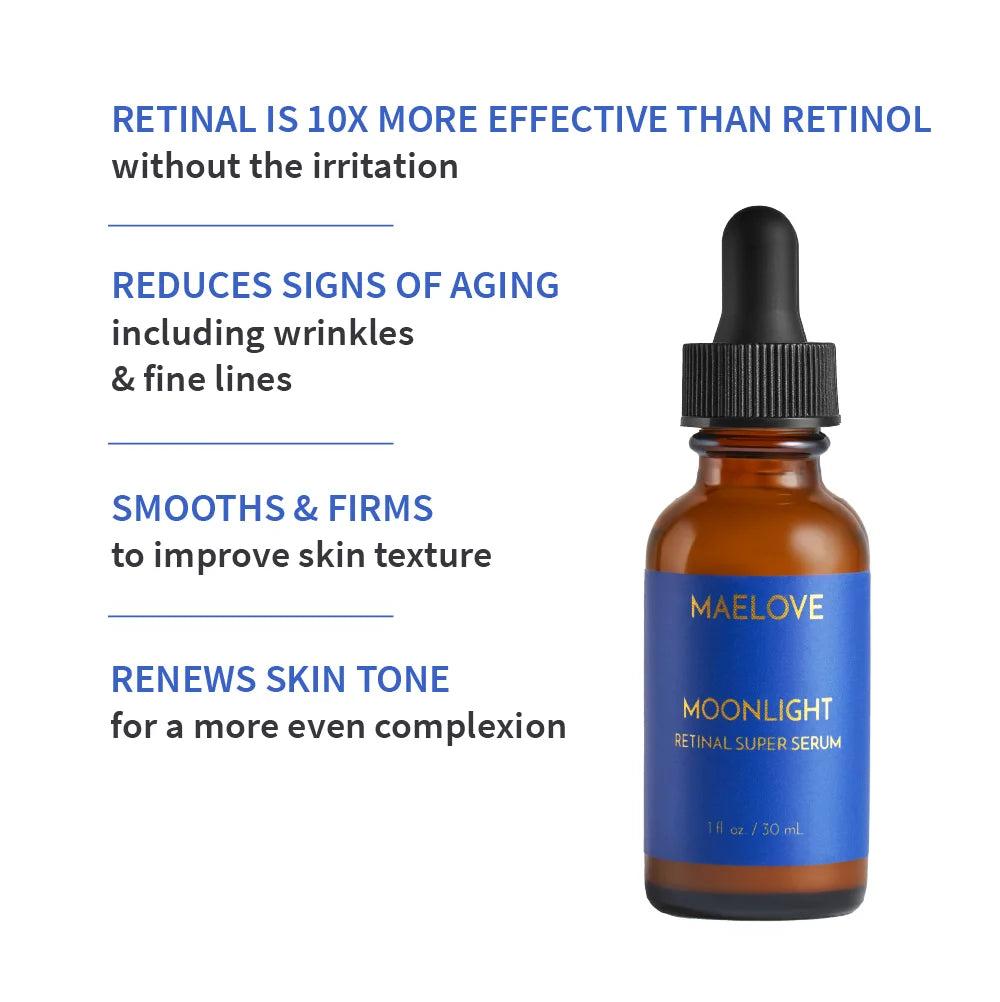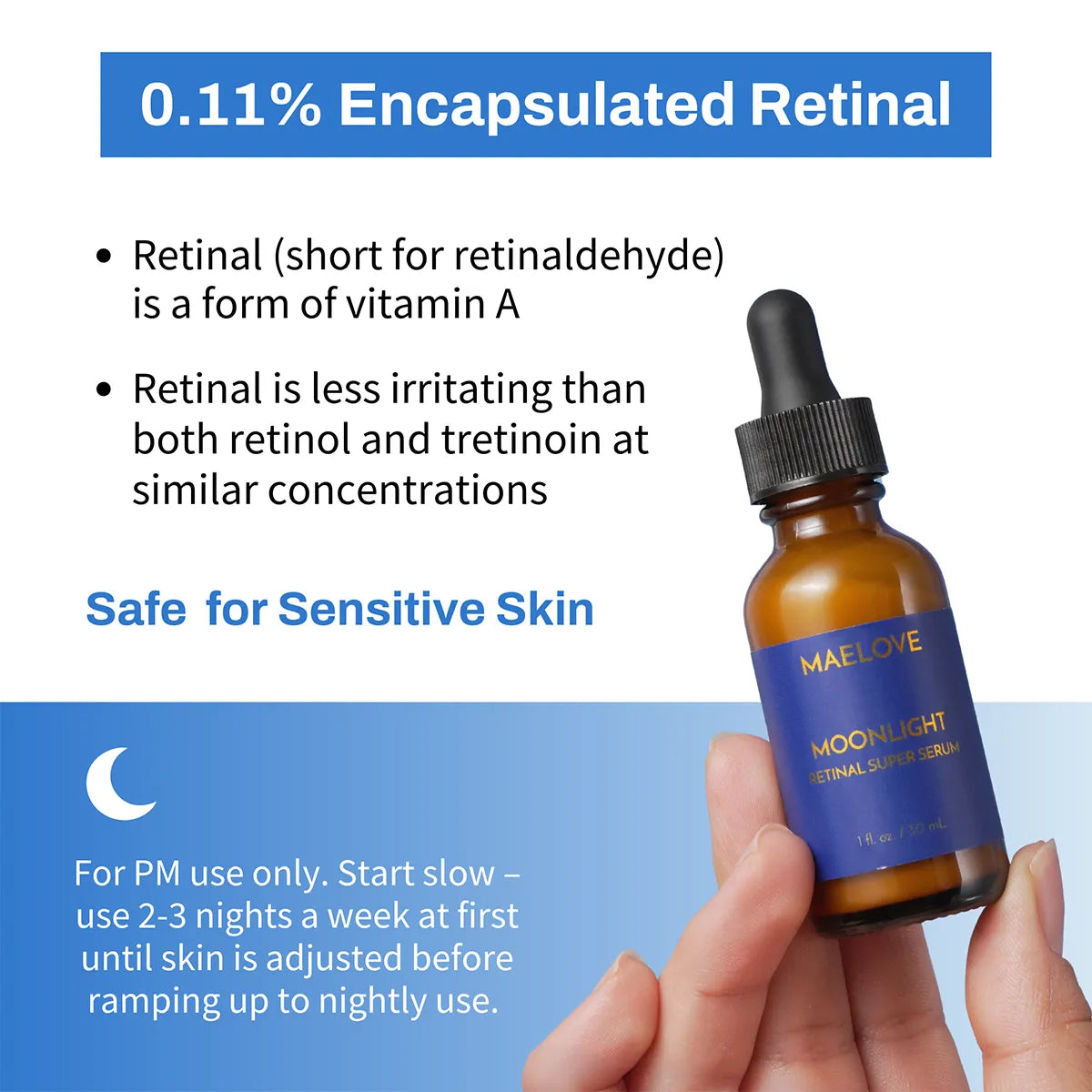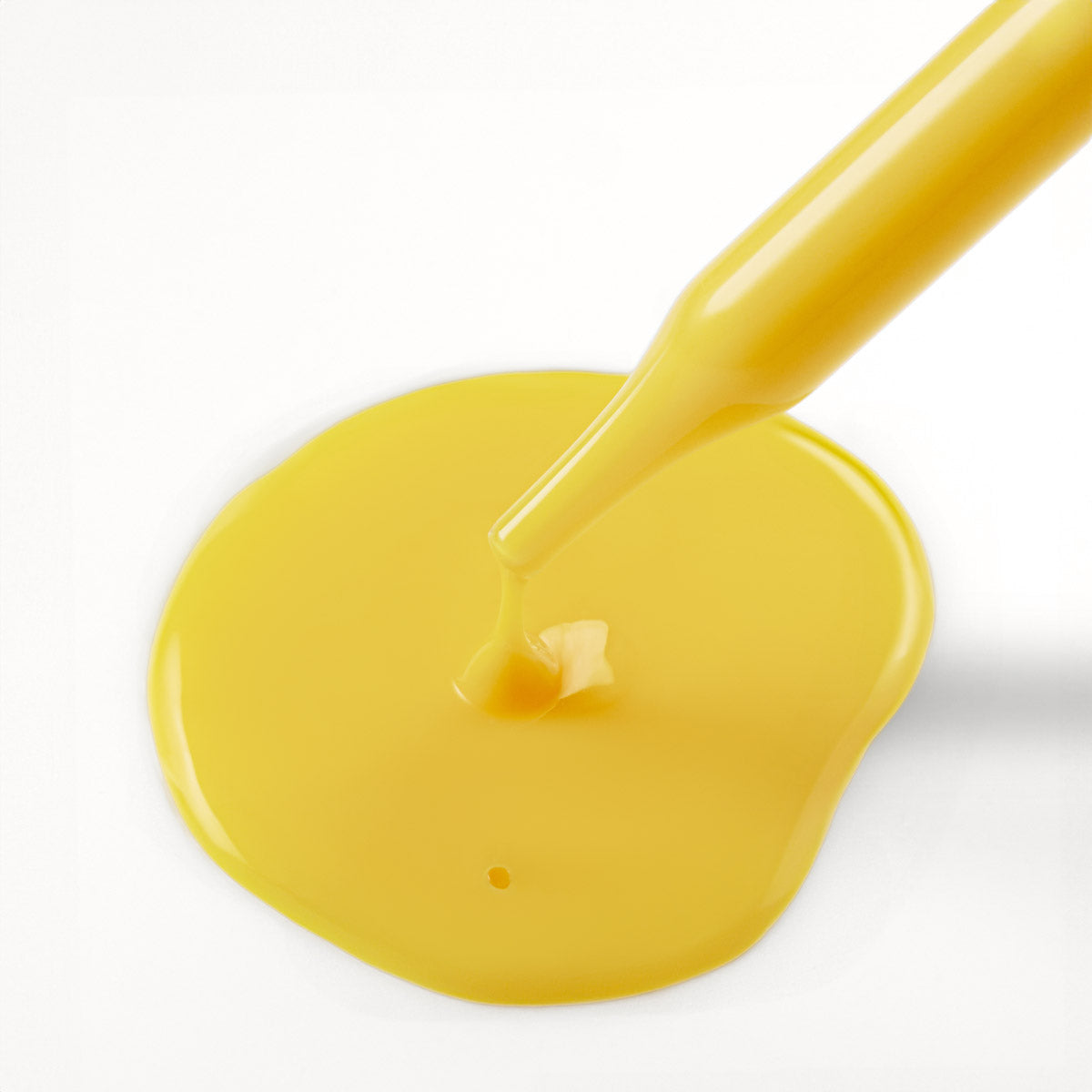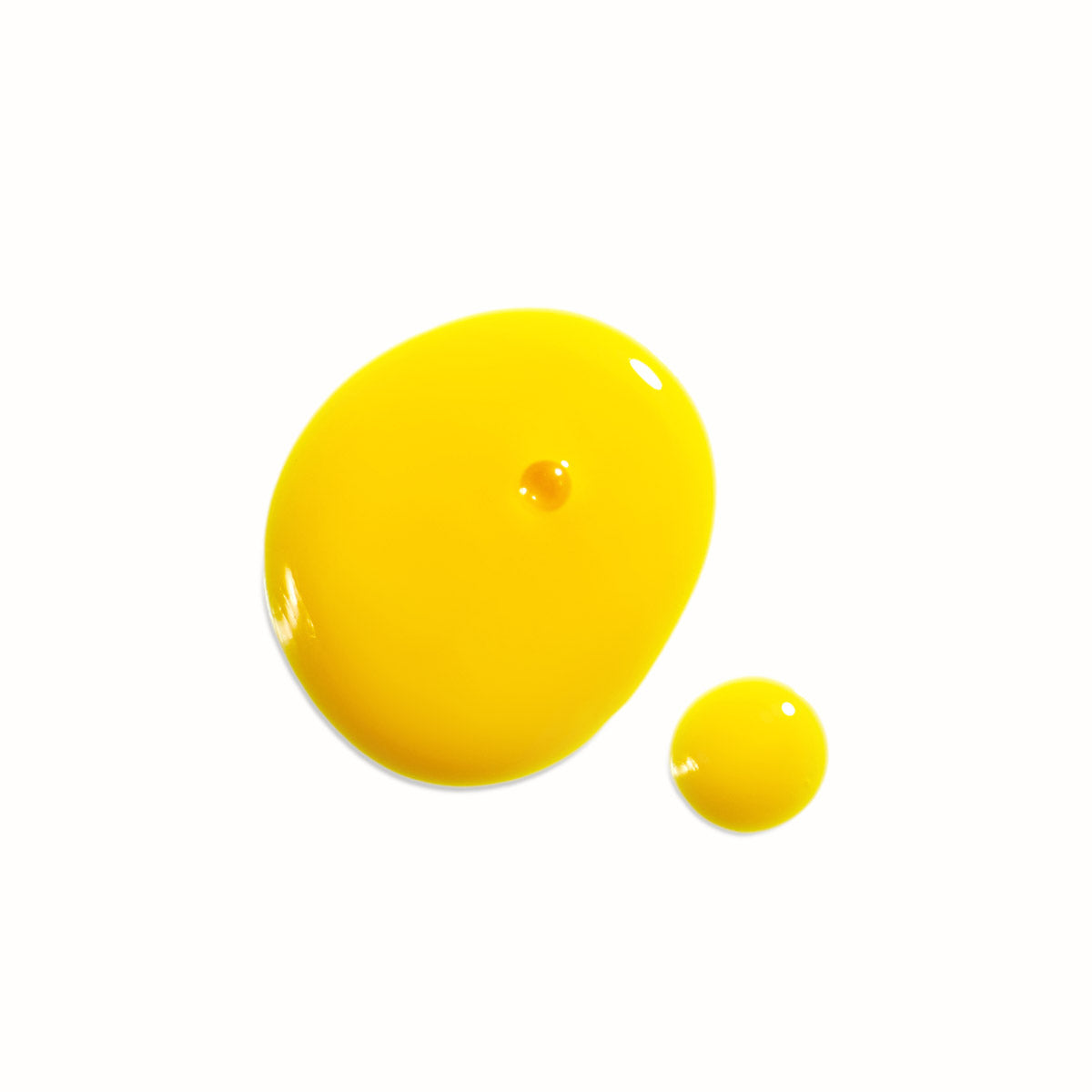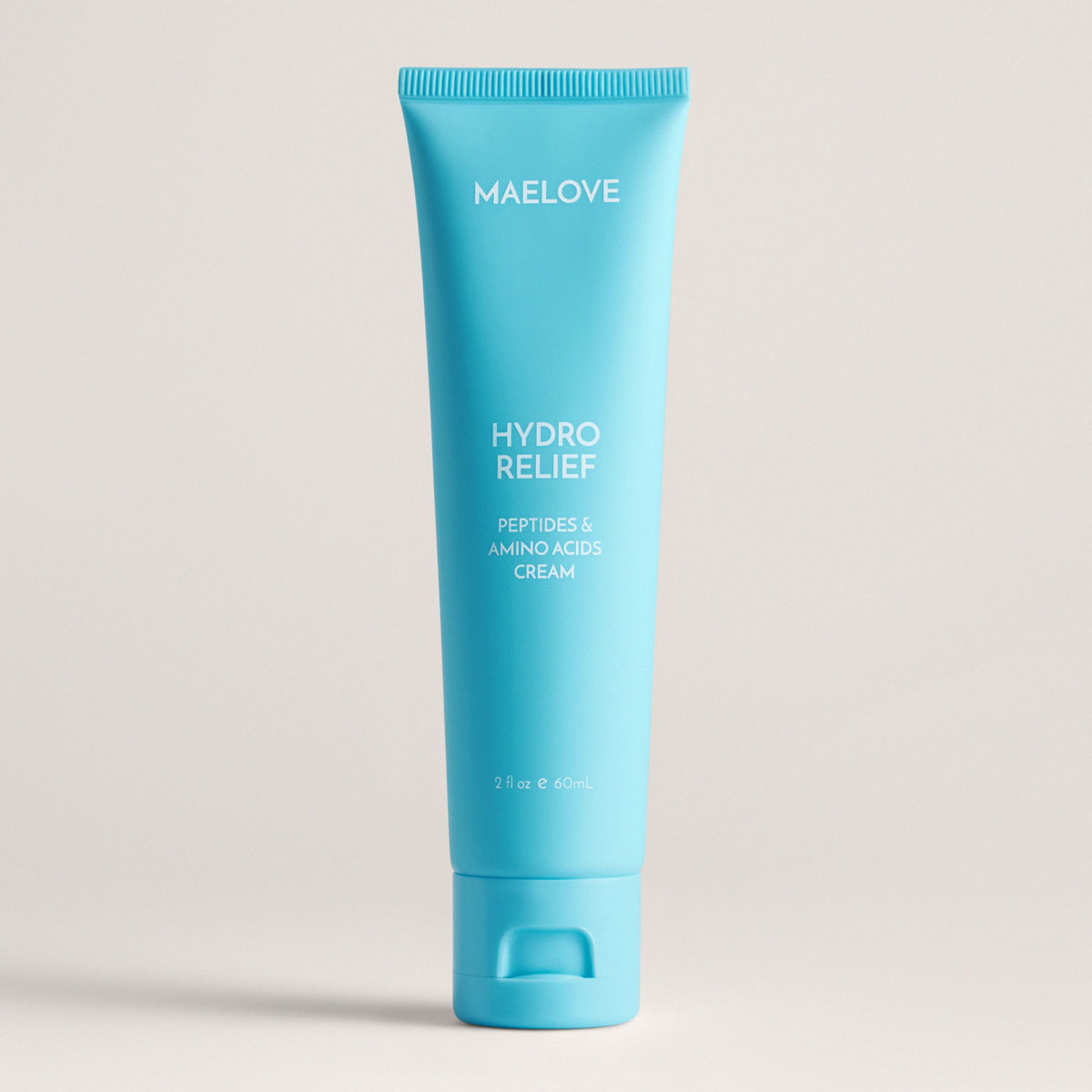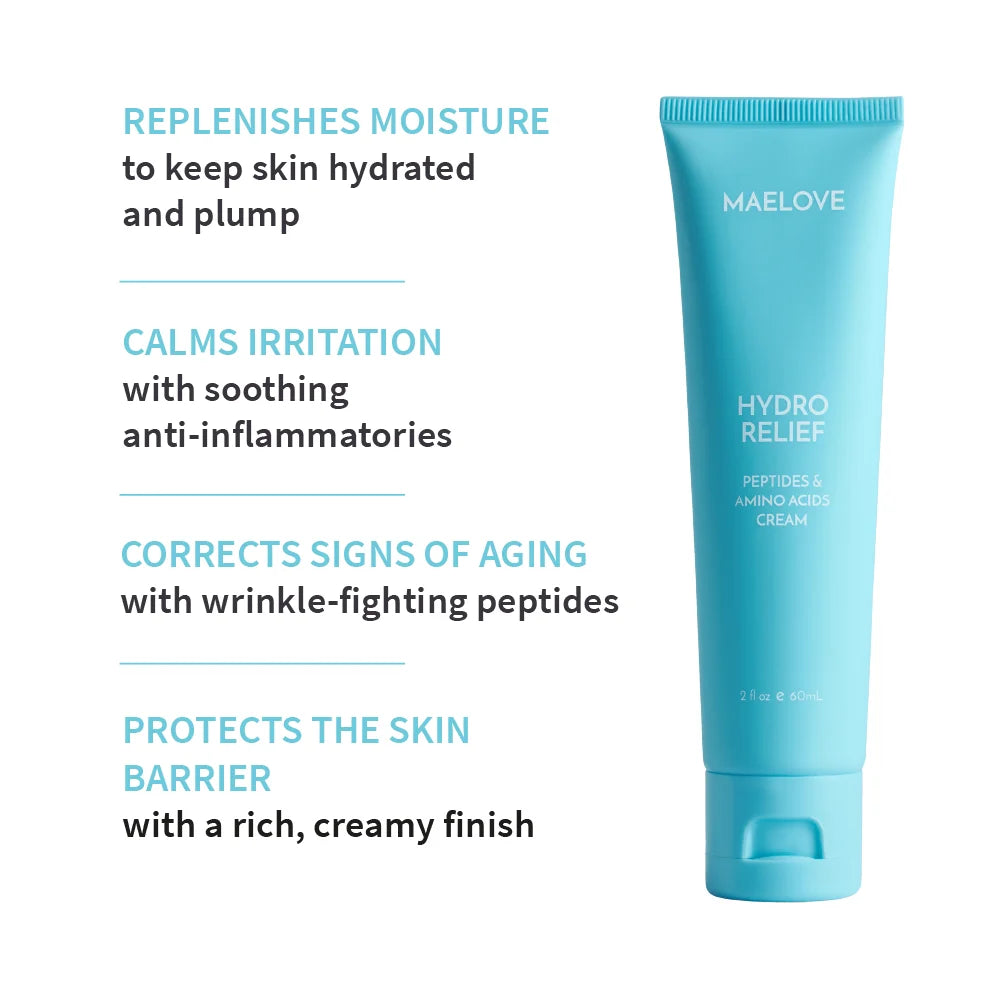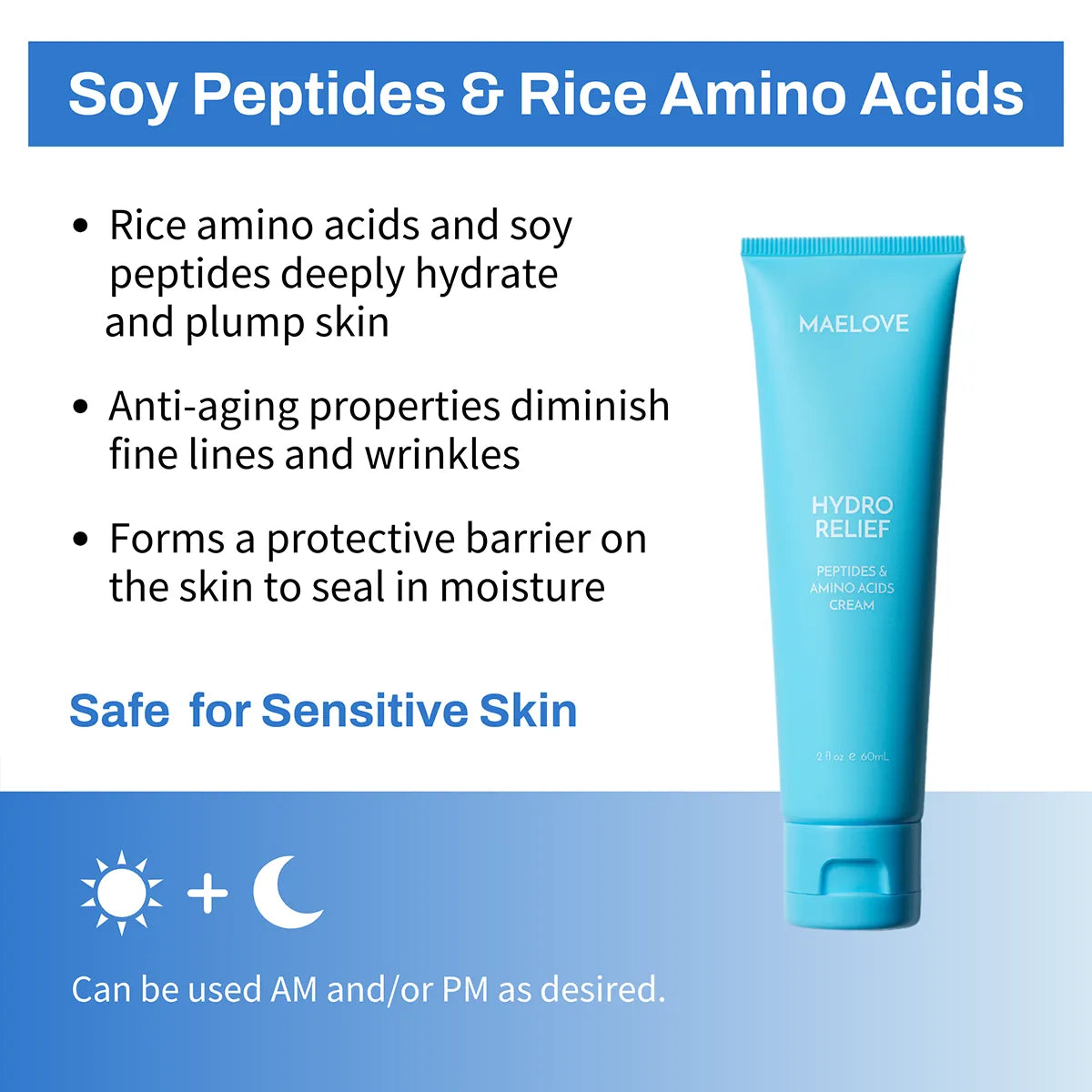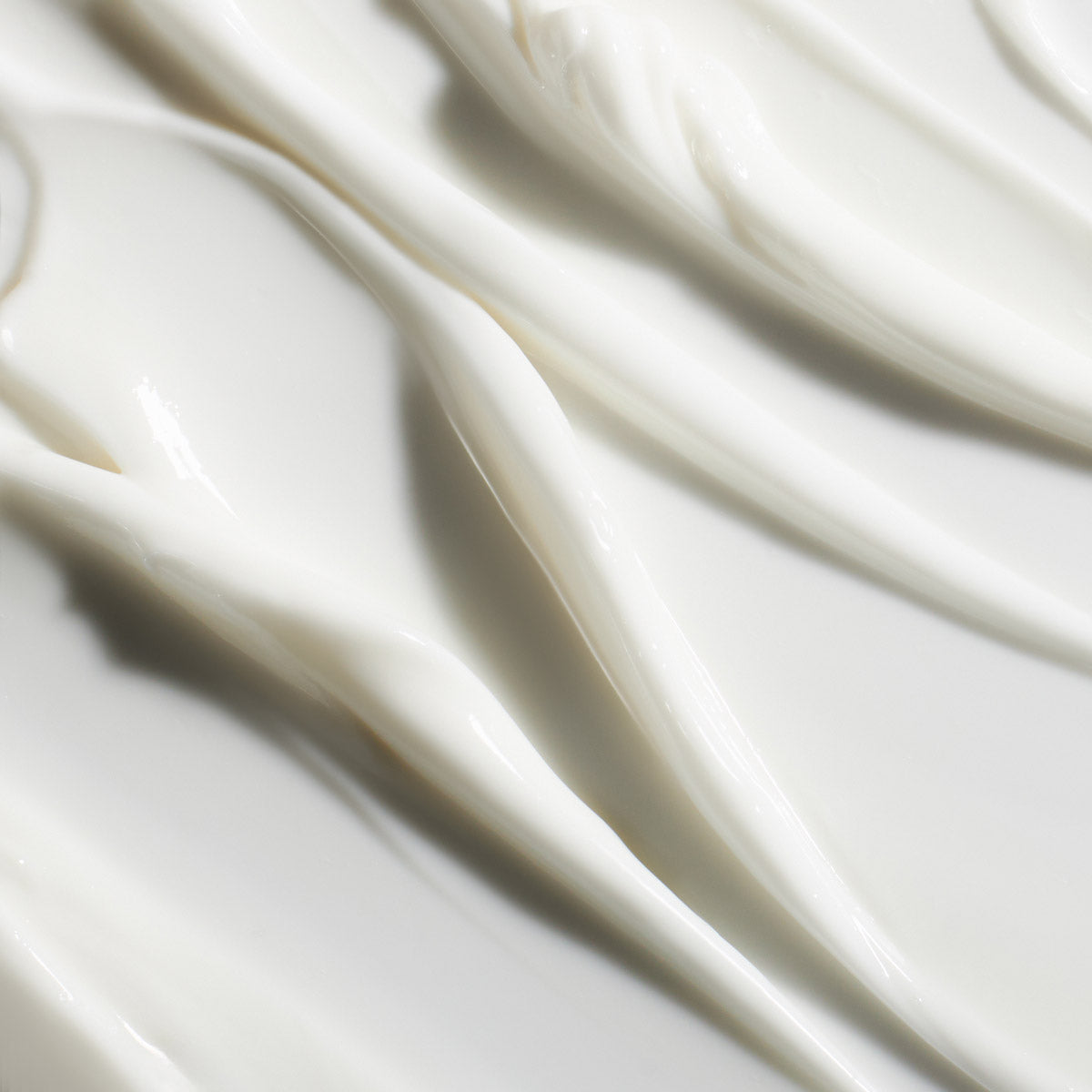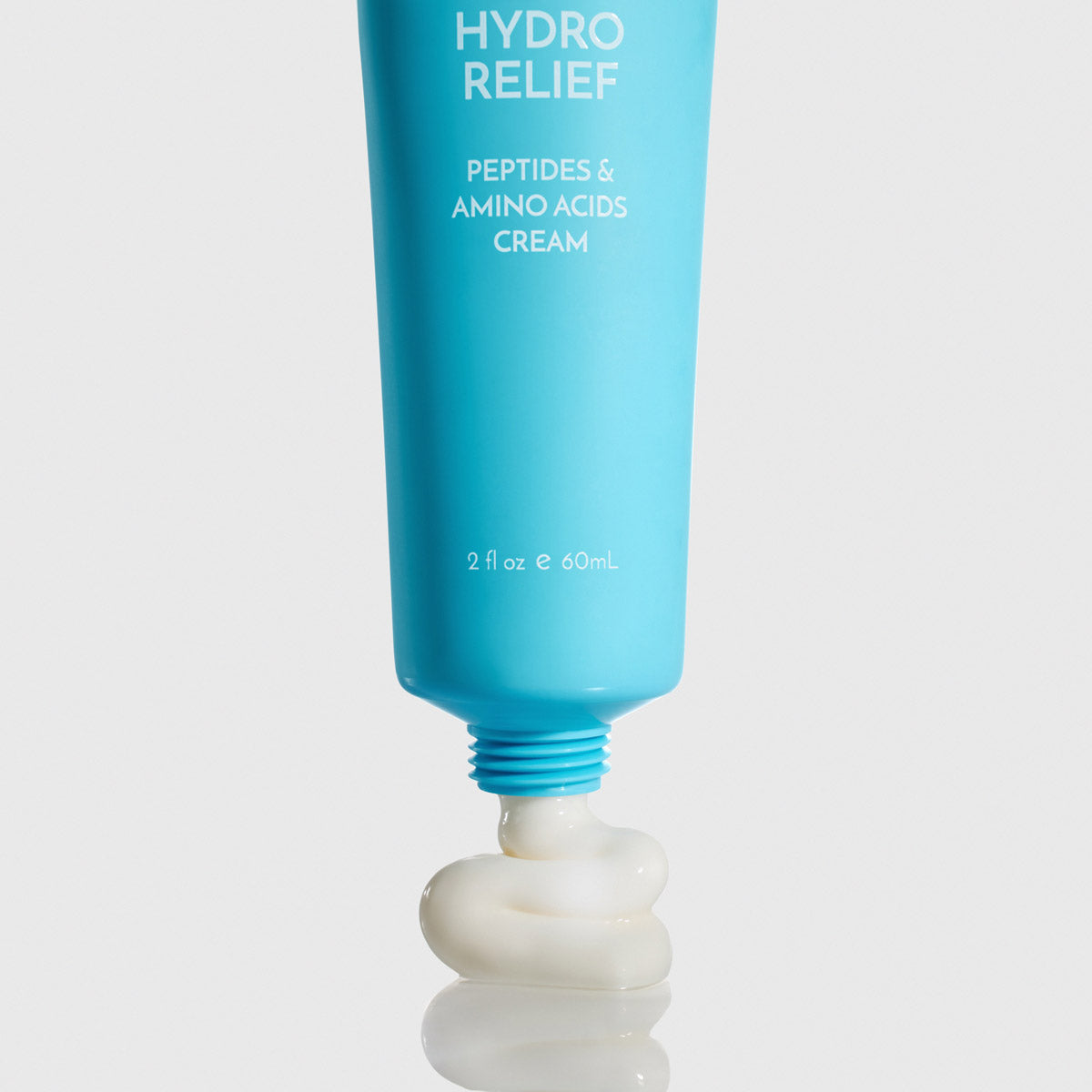
Vitamin C Serums
Vitamin C is one of the most researched and effective ingredients in modern skincare — celebrated for its ability to brighten, protect, and rejuvenate. At Maelove, we use the gold-standard form of Vitamin C, L-ascorbic acid, which is clinically proven to deliver the most effective results for skin health. By pairing this powerhouse ingredient with carefully chosen supporting actives, our formulas maximize benefits while remaining gentle enough for daily use.
Our Vitamin C serums are designed to address dullness, uneven skin tone, early signs of aging, and environmental stressors.
For the curious
L-ascorbic acid is considered the most important and effective form of vitamin C in skincare.
Unlike derivatives that must convert into active vitamin C once absorbed, pure L-ascorbic acid is biologically active, meaning it gets to work immediately. It is proven to boost collagen production, protect skin from free radical damage, fade hyperpigmentation, and improve skin tone. While derivatives like sodium ascorbyl phosphate or magnesium ascorbyl phosphate can be gentler, they’re generally less potent. For those seeking transformative results, dermatologists typically recommend L-ascorbic acid serums formulated with stabilizers such as ferulic acid and vitamin E.
Our Maelove Glow Maker exemplifies this balance, offering 15% pure L-ascorbic acid in a stabilized formula at an accessible price point.
In short, if your goal is maximum brightening, anti-aging, and antioxidant protection, choosing a serum with L-ascorbic acid is essential.
For sensitive skin, a range of 10-15% L-ascorbic acid is widely recommended, with 15% as the sweet spot.
Higher strengths, such as 20% or more, do not necessarily provide better results and may instead cause stinging, redness, or dryness. Pairing L-ascorbic acidwith soothing antioxidants and hydrating ingredients helps minimize irritation while boosting stability.
Our Maelove Glow Maker combines 15% L-ascorbic acid with ferulic acid, vitamin E, and hyaluronic acid, making it both effective and well-tolerated. Over time, consistent use at this concentration can deliver bright, even-toned, and healthier-looking skin.
Yes. Vitamin C helps improve fine lines and wrinkles by stimulating collagen production and protecting existing collagen from free radical damage. It also reduces oxidative stress that contributes to visible aging.
With consistent use, many people notice brighter skin and smoother texture within 4–6 weeks. For deeper results, such as improved firmness and wrinkle reduction, it may take 8–12 weeks.
Using a stabilized vitamin C serum daily, such as our Maelove Glow Maker, maximizes benefits. Results also depend on consistent sunscreen use, since UV damage can counteract progress. While vitamin C isn’t an overnight fix, its protective and restorative effects compound over time, making it an essential long-term investment in youthful, resilient skin.
Yes. Vitamin C is well-known for its ability to fade dark spots and hyperpigmentation. It works by inhibiting tyrosinase, the enzyme responsible for melanin production, which leads to fewer new dark spots forming and gradual fading of existing discoloration.
Consistent use of a well-formulated vitamin C serum can help improve the look of sun damage, acne scars, and uneven tone. Results typically appear within 6–12 weeks with daily use. Combining vitamin C with sunscreen is key, as it prevents new pigmentation from forming while vitamin C addresses existing spots.
Our Maelove Glow Maker is a good example of a vitamin C serum designed for brightening, as it pairs L-ascorbic acid with ferulic acid and vitamin E for added stability and effectiveness.
The best vitamin C serums are those that combine effectiveness, stability, and tolerability. Look for products with 10–20% L-ascorbic acid, the most researched and proven form of vitamin C. A high-quality serum should also include stabilizers like vitamin E and ferulic acid, which enhance absorption and slow oxidation, ensuring your serum stays potent longer. Hydrating ingredients such as hyaluronic acid are also helpful, especially for balancing out potential dryness.
Dermatologists often recommend formulas modeled after the classic SkinCeuticals C E Ferulic, which set the standard for vitamin C serums in 2005 when it launched. However, there are modern, excellent alternatives at more accessible price points. Our Maelove Glow Maker is one of the most popular, delivering 15% L-ascorbic acid with vitamin E, ferulic acid, and hyaluronic acid in a lightweight, fast-absorbing base. It’s designed for daily use and works across skin types, from oily to dry.
The “best” vitamin C serum ultimately depends on your skin type, budget, and tolerance—but focusing on well-researched ingredients and thoughtful formulation will help you choose a serum that delivers visible, lasting results.
Dermatologists typically recommend vitamin C serums that use pure L-ascorbic acid in the 10–15% range, paired with stabilizers like vitamin E and ferulic acid. This specific combination has been shown in research to enhance absorption and extend antioxidant effectiveness.
SkinCeuticals C E Ferulic, which launched in 2005, is the most famous example, but it comes with a high (nearly $200 per bottle) price tag.
Modern, affordable alternatives, such as our Maelove Glow Maker, use a very similar formula, featuring 15% L-ascorbic acid with vitamin E, and ferulic acid.
The key is to choose a formula that balances potency with stability so the vitamin C remains effective over time.
SkinCeuticals C E Ferulic became the benchmark vitamin C serum when it launched in 2005. It features 15% L-ascorbic acid, vitamin E, and ferulic acid. However, it has a high price point of almost $200 per bottle.
Our Maelove Glow Maker is widely recognized as a modern alternative, offering the same formulation: 15% L-ascorbic acid with vitamin E, and ferulic acid. We further improve on the formula by adding hyaluronic acid and aloe for hydration and resveratrol for additional antioxidant benefit. Many customers and dermatologists note similar results in terms of brightness, even tone, and antioxidant protection.
High concentrations of vitamin C (20% and above) are not necessarily more effective and often come with drawbacks. Skin can only absorb so much vitamin C at once, meaning very high percentages may provide diminishing returns. Instead, they tend to increase the risk of irritation, including redness, stinging, or peeling—especially in sensitive or dry skin types. Overly strong concentrations can also destabilize more quickly, reducing product shelf life.
Dermatologists generally recommend sticking to the 10–20% range, which is proven to be both safe and effective. Our Glow Maker serum, with 15% L-ascorbic acid, sits right in this ideal zone, offering powerful results without unnecessary irritation.
Vitamin C and retinol address wrinkles in complementary ways.
Vitamin C primarily protects collagen from breakdown, stimulates new collagen formation, and reduces oxidative stress caused by UV exposure and pollution. Retinol, on the other hand, increases cell turnover, boosts collagen production, and smooths fine lines more directly.
Retinol is generally stronger for targeting established wrinkles, while vitamin C provides daily defense and brightening.
Dermatologists often recommend using both: vitamin C in the morning for antioxidant protection and retinol at night for cell renewal. For example, starting the day with our Glow Maker serum can help shield skin from environmental damage, while evening retinol serum such as our Stargaze promotes renewal. Together, these ingredients offer one of the most effective anti-aging strategies available, rather than choosing one over the other.
Yes, retinol and vitamin C can be used together, but timing is key. Both are powerhouse ingredients for anti-aging, yet layering them in the same routine may increase the risk of irritation—especially for sensitive skin. Dermatologists often recommend splitting them into morning and evening use for best results.
Vitamin C, such as the 15% L-ascorbic acid in our Maelove Glow Maker, works best during the day because it protects skin from free radicals caused by UV exposure and pollution. Retinol is best reserved for nighttime, when it can stimulate cell turnover and collagen renewal without sun interference.
Using them in separate routines not only minimizes irritation but also ensures round-the-clock support for your skin: vitamin C defends and brightens during the day, while retinol repairs and smooths overnight. If you prefer to use them together in the same routine, it’s possible once your skin has built tolerance. Apply vitamin C first on clean, dry skin, wait a few minutes, then layer retinol. Always follow with moisturizer to buffer potential dryness.
Sunscreen is essential when using either ingredient, as both make your skin more vulnerable to UV damage. When combined properly, retinol and vitamin C can deliver powerful anti-aging benefits, improving tone, texture, fine lines, and overall radiance.
Yes. Benzoyl peroxide and high concentrations of exfoliating acids (like strong glycolic or salicylic acids) can reduce vitamin C’s effectiveness or cause irritation when layered directly. If you want to use these ingredients, separate them into different routines—apply vitamin C in the morning and the stronger treatments at night.
Retinol can also be irritating when used with vitamin C in the same routine, so most dermatologists recommend vitamin C in the morning and retinol in the evening.
Gentle hydrators like hyaluronic acid or niacinamide pair beautifully with vitamin C and can enhance results.
Vitamin C serum can be applied either morning or night, but morning use is generally preferred.
That’s because vitamin C neutralizes free radicals caused by UV exposure and pollution, offering daytime protection. Always follow with sunscreen, as the two work synergistically to defend against premature aging and pigmentation. Night-time application is also beneficial, especially if you prefer a simpler morning routine, but it won’t offer the same daytime protection.
Some people even use vitamin C both morning and evening if their skin tolerates it well. A serum like our Maelove Glow Maker absorbs quickly and layers easily, making it convenient for either time of day.
If you’re new to vitamin C or have sensitive skin, starting 2–3 times per week is a smart approach.
This allows your skin to adjust and reduces the risk of redness or irritation. As tolerance builds, you can increase usage to every other day, and eventually to daily application, which is ideal for maximum benefit. Pairing vitamin C with soothing and hydrating ingredients also helps reduce irritation. Our Maelove Glow Maker includes hyaluronic acid and aloe for extra comfort.
The key is consistency: even if you start slow, gradual use will deliver visible improvements in brightness, tone, and overall skin health.
Yes. Daily use of vitamin C serum is recommended for best results. Since vitamin C provides antioxidant protection against daily environmental stressors like UV rays and pollution, consistency is key.
Most well-formulated serums, such as our Glow Maker, are designed for daily application and are gentle enough for regular use. Morning use is especially beneficial, but applying at night can still support skin repair. For sensitive users, starting every other day and increasing to daily is a good way to build tolerance.
Over time, everyday application helps maintain brighter, smoother, and more even-toned skin.
Fresh vitamin C serum should be clear, colorless, or a very pale yellow. Over time, L-ascorbic acid can oxidize, turning the serum darker yellow, orange, or brown. This indicates reduced potency and potential for skin irritation. A change in smell—often metallic or sour—can also signal that the serum has gone bad. To extend shelf life, store vitamin C serum in a cool, dark place, away from sunlight and heat. Dark or air-restrictive packaging also helps preserve stability. Formulas like Glow Maker use stabilizers such as ferulic acid and vitamin E to slow oxidation, but it’s still important to use the product consistently within 3–6 months of opening for best results.
Vitamin C serum should be applied on clean, dry skin before heavier serums and moisturizers.
A typical routine would be: cleanse, apply vitamin C serum, then layer hydrating serums like hyaluronic acid, followed by moisturizer and sunscreen in the morning. Niacinamide can be used with vitamin C, either in the same routine or separately, as modern research shows they work well together. If using exfoliating acids (AHA/BHA), it’s best to apply them at night and vitamin C in the morning to avoid over-exfoliation and sensitivity. Sunscreen is essential to pair with vitamin C, as it enhances protection against UV damage.
Lightweight formulas like our Maelove Glow Maker absorb quickly, making them easy to layer without pilling or heaviness.
For oily or acne-prone skin, lightweight, water-based vitamin C serums are best. These absorb quickly without clogging pores or leaving a greasy finish.
Our Maelove Glow Maker is a good fit here, as it’s fast-absorbing and non-comedogenic. Ultimately, the right serum depends on texture preference and secondary concerns, but the benefits of vitamin C apply to all skin types.
Vitamin C comes in several forms. L-ascorbic acid is the most bioavailable, meaning skin absorbs and uses it directly without conversion. However, it’s less stable and can oxidize quickly if not formulated properly.
Derivatives like sodium ascorbyl phosphate, magnesium ascorbyl phosphate, or tetrahexyldecyl ascorbate are more stable and may be better for sensitive skin, but they’re less potent since they need to convert into active vitamin C once absorbed.
For the best of both worlds, look for formulas that stabilize pure L-ascorbic acid with antioxidants such as ferulic acid and vitamin E. This pairing slows oxidation and boosts effectiveness. Our Maelove Glow Maker is an example of a serum that uses this approach, delivering the full benefits of pure vitamin C in a formula designed to remain stable longer. Ultimately, absorption is highest with L-ascorbic acid, but stability depends on thoughtful formulation.
As Vitamin C can be unstable in solution, combining with Vitamin E has been found to extend the stability of Vitamin C, as well as increase its effectiveness by four-fold (Lin et al. 2003). This is because Vitamin E as an antioxidant naturally works with Vitamin C in the skin to protect it. Vitamin C is hydrophilic (water loving) while Vitamin E is lipophilic (oil loving), and together, they can protect the watery and fatty elements in a cell. In fact, Vitamins C and E in isolation are minimally effective. Further, Vitamin C can regenerate oxidized Vitamin E. Ferulic acid is a plant antioxidant that combined with Vitamin E can further extend the effectiveness of Vitamins C by eight-fold (Lin et al. 2005). For these reasons, The Glow Maker is formulated with 15% Ascorbic Acid, Vitamin E and Ferulic Acid.
Vitamin C is necessary in collagen production and topical Vitamin C has been scientifically proven to boost collagen production in aged skin (Nusgens et al. 2001). The collagen content in skin decreases over time – roughly 1% per year with accelerated loss post-menopause – leading to wrinkles and sagging as we get older. UV damage accelerates this process in photoaged skin.
The ability of topical Vitamin C to boost collagen production has been demonstrated in placebo-controlled trials of aged skin in postmenopausal women (Nusgens et al. 2001) and in those with photoaged skin (Traikovitch 1999). Note that the role of Vitamin C in collagen production is also responsible for its beneficial role in wound healing and for the skin symptoms of scurvy which results from Vitamin C deficiency (Pullar et al. 2017).
Another benefit of Vitamin C is that it can brighten and even out your skin tone by treating hyperpigmentation. This is not only because Vitamin C can fight UV damage which is a main cause of hyperpigmentation, but also because it can inhibit an enzyme (tyrosinase) involved in skin pigment production. A concentration of at least 10% Ascorbic acid is recommended to get maximal benefits against UV induced hyperpigmentation (DeDormeal et al. 2019).
